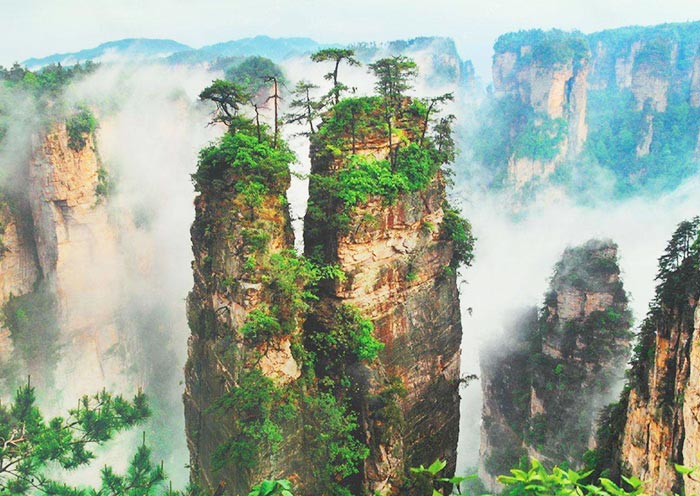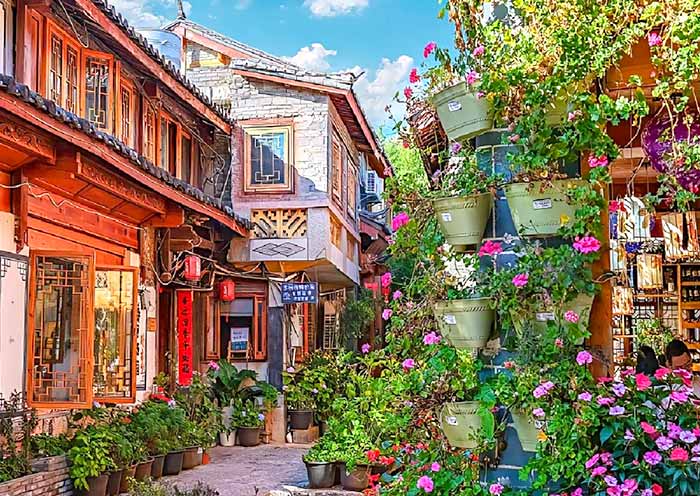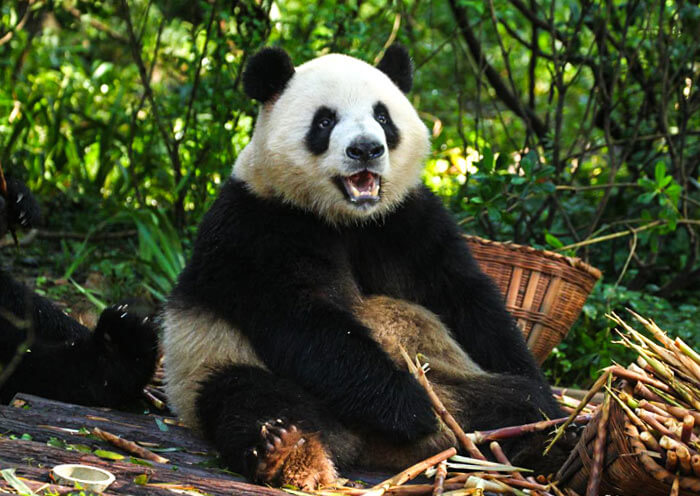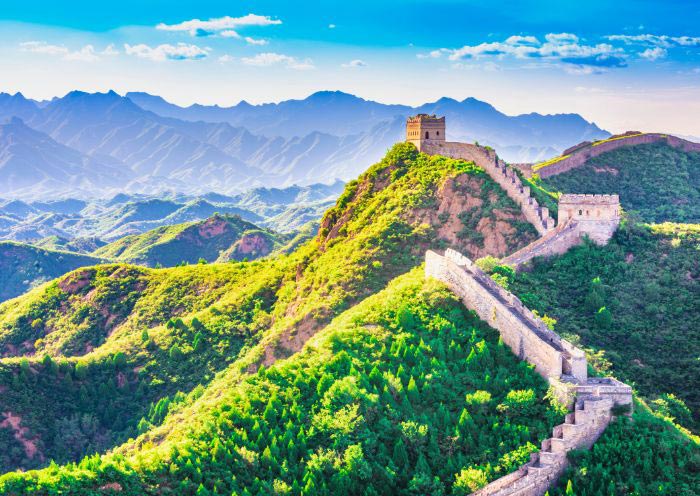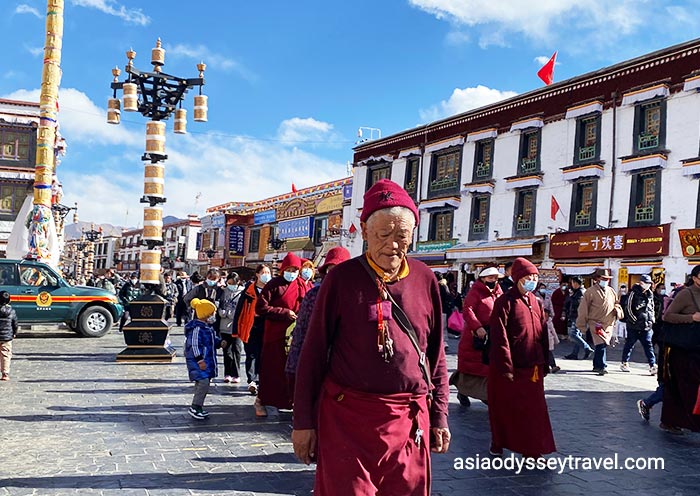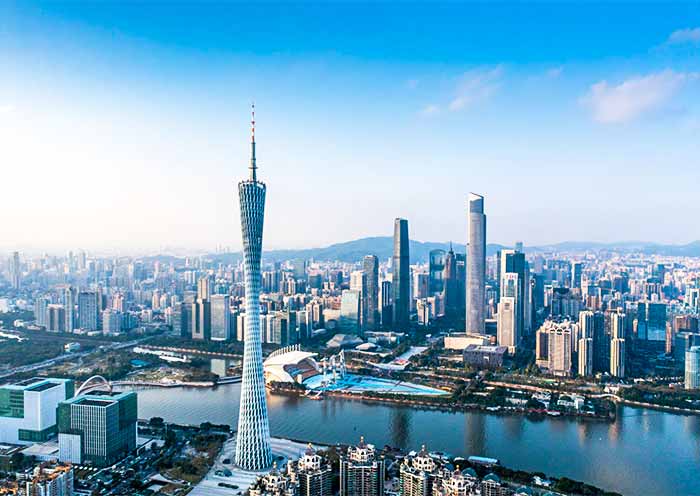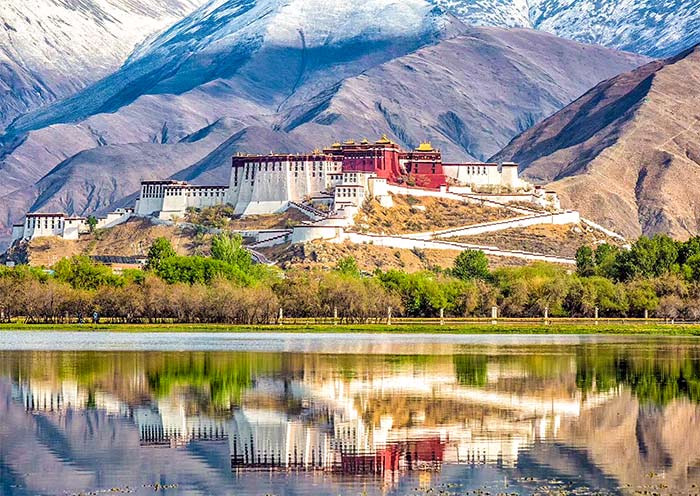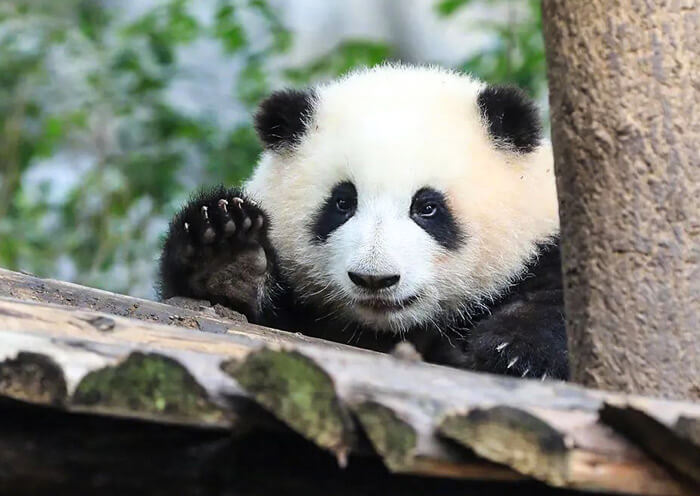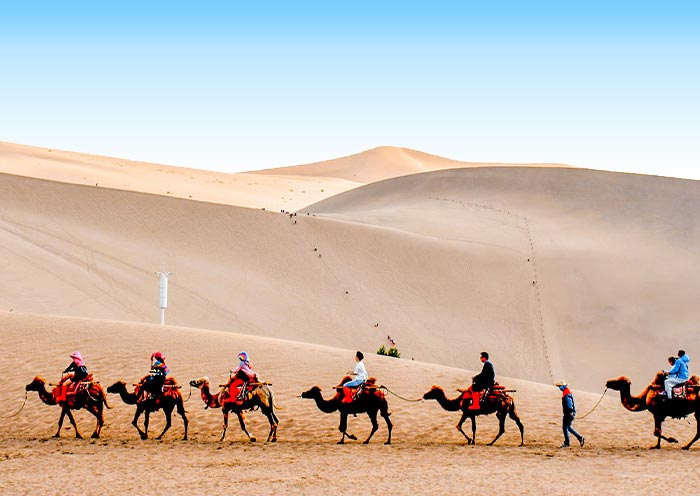21 Days China Tour from Shanghai: Pandas, Yunnan, Avatar Mountains, China's Icons
- Highlights
- Itinerary
- Price
- Trip Notes
- Accommodation
- Photos
- Reviews
3 Weeks, 8 Cities: China’s Golden Triangle & Southwest Highlights
Your China dream list comes true in one incredible journey.
This 21 Days China Tour from Shanghai seamlessly connects China’s Golden Triangle - Beijing, Xi’an, and Shanghai - with the country’s most breathtaking southwest highlights, including Zhangjiajie, Chengdu, and Yunnan.
If you’ve ever dreamed of exploring 5,000 years of civilization, diverse ethnic cultures, and world-class natural wonders all in one trip, this adventure is made for you.
Modern Marvels: Feel the pulse of Shanghai, from the Bund’s skyline to its soaring skyscrapers.
Nature’s Masterpieces: Be amazed by Zhangjiajie’s Avatar Mountains, Chengdu’s pandas & Leshan Giant Buddha, and Yunnan’s snow-capped peaks, alpine lakes, and deep gorges.
Culture & Ethnicity: Encounter the vibrant traditions of the Naxi (Lijiang), Bai (Dali), and Tibetan (Shangri-La) peoples.
History & Heritage: Walk through Beijing’s Forbidden City & Great Wall and Xi’an’s Terracotta Warriors & Ancient City Wall.
Expertly designed by Asia Odyssey Travel, this 21-day route combines high-speed trains and short flights for smooth travel and no backtracking. Starting in Shanghai and ending in Beijing, it’s perfectly arranged for international travelers. Enjoy the journey with private guides, drivers, and strong local support, so you can focus on discovery and relaxation.
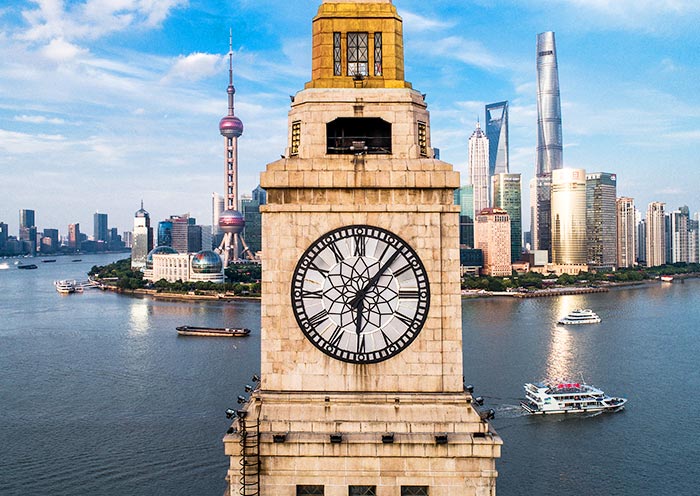
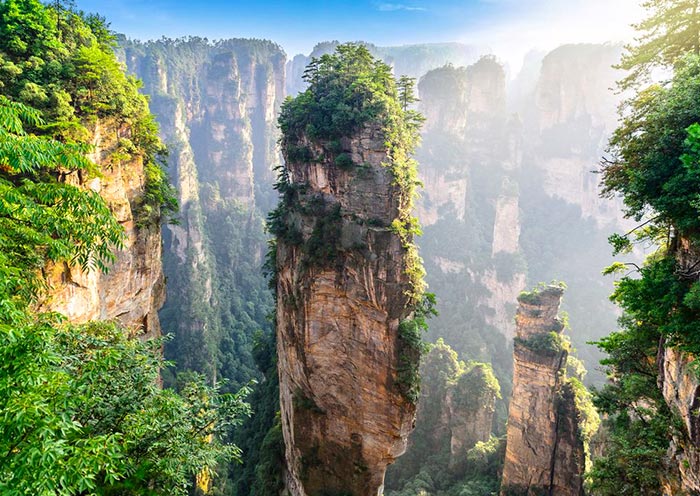
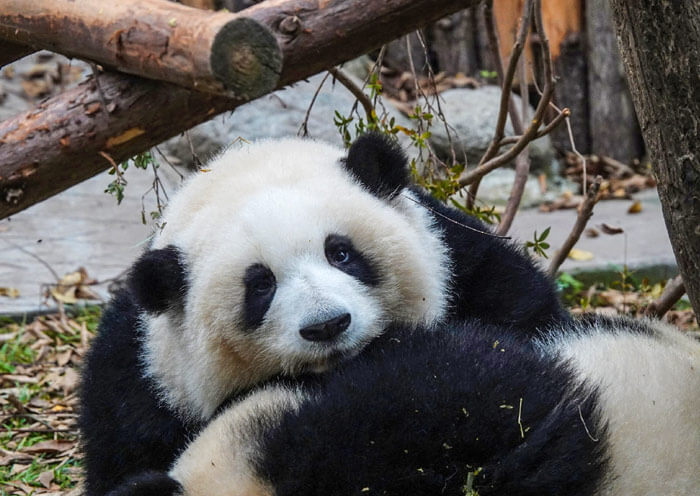
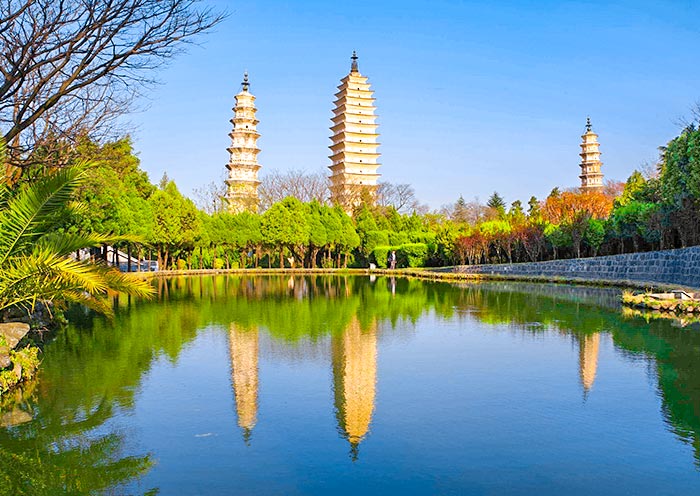
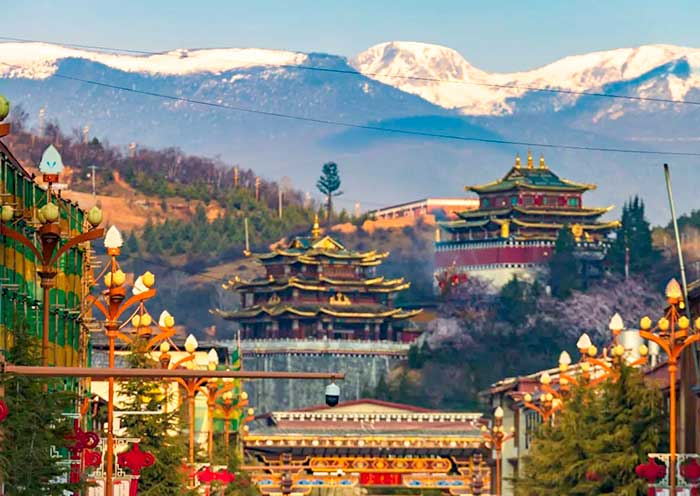
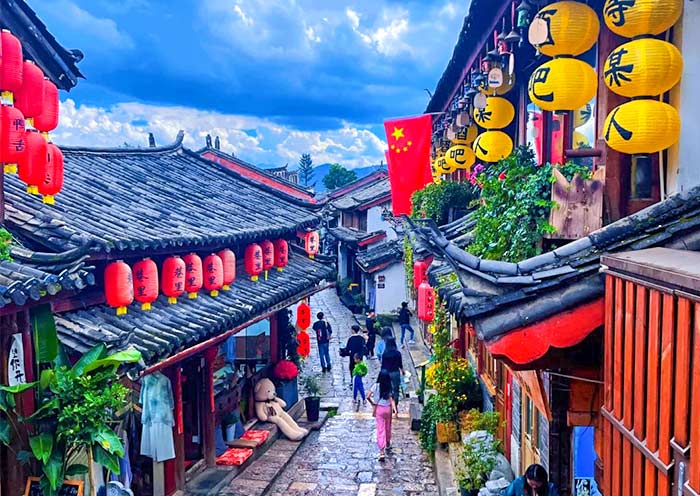
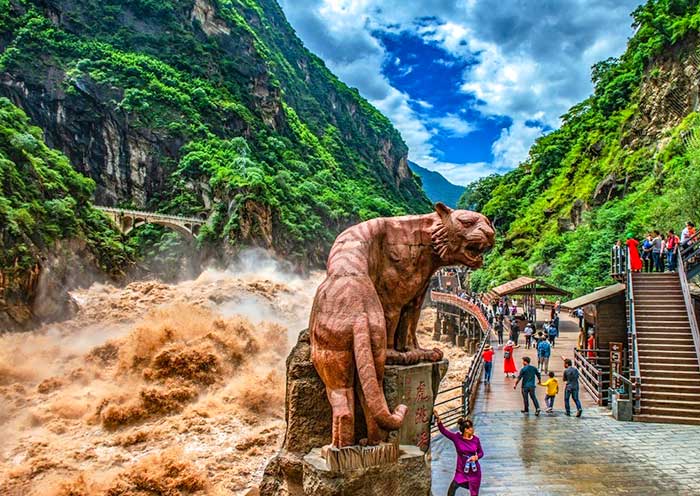
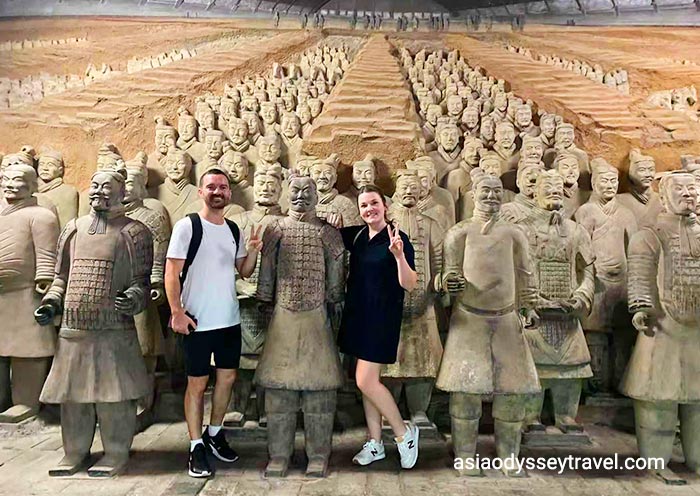
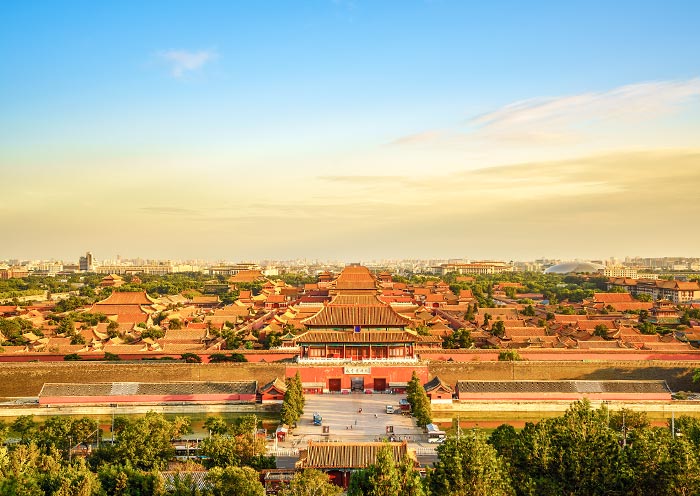
Itinerary at a Glance
Shanghai (2 Days)
Shanghai Tower, Shanghai Museum, Yu Garden & Bazaar, Nanjing Road & The Bund
Zhangjiajie (4 Days)
Yuanjiajie, Tianzi Mountain, Baofeng Lake, Zhangjiajie Grand Canyon, Tianmen Mountain
Chengdu (2 Days)
Chengdu Panda Base, Wenshu Monastery, Renmin Park, Jinli Old Street, Leshan Giant Buddha
Dali, Yunnan (2 Days)
Three Pagodas of Chongsheng Temple, Erhai Lake, Dali Ancient Town, Xizhou Local Market, Xizhou Ancient Town, Zhoucheng Tie-dye
Shangri-La, Yunnan (2 Days)
Pudacuo National Park, Songzanlin Monastery, Dukezong Ancient Town
Lijiang, Yunnan (3 Days)
Lijiang Old Town, Black Dragon Pond Park, Jade Dragon Snow Mountain, Blue Moon Valley, Baisha Murals, Shuhe Ancient Town (Optional), Tiger Leaping Gorge, First Bend of the Yangtze River
Xi’an (2 Days)
Terracotta Warriors, Ancient Wall, Bell Tower (or Drum Tower), Giant Wild Goose Pagoda and Muslim Quarter
Beijing (4 Days)
Tian’anmen Square, Forbidden City, Jingshan Park, Summer Palace, Mutianyu Great Wall, Olympic Park (Bird’s Nest & Water Cube), Temple of Heaven, Imperial College Museum/Guozijian, Hutong
Itinerary Day by Day
Nihao! Welcome to Shanghai, China’s most internationalized and vibrant city! Shanghai's long-term fusion of Eastern and Western cultures has contributed to Shanghai's unique culture. Upon your arrival at the airport/train station in Shanghai, the tour guide and driver will meet and greet you at the exit, and then escort you to the well-selected hotel in downtown Shanghai. The rest of the day is free on your own so you can have a good rest for the jet lag or explore by yourself around your hotel.
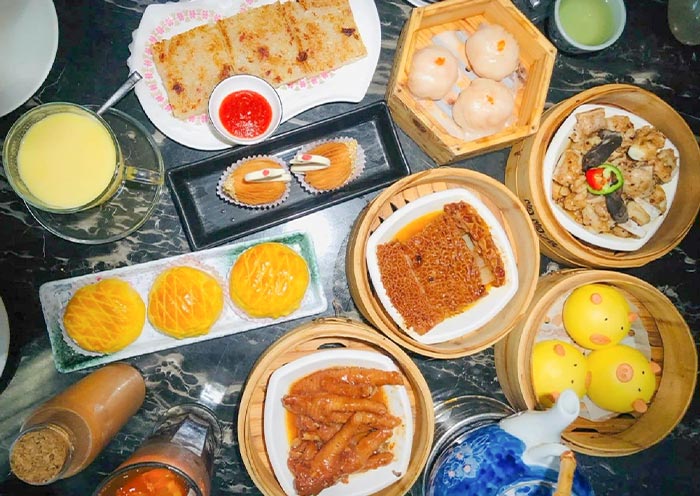
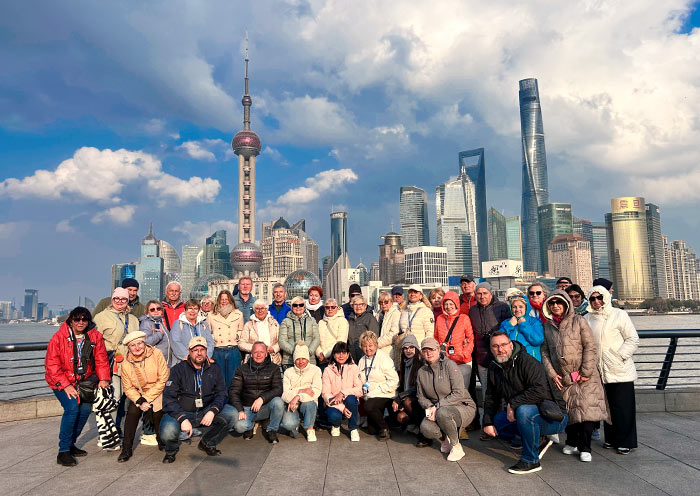
Today, your will have full day to experience the perfect blend of East and West in the "Paris of the East." Explore brilliant museums, classical gardens, futuristic skyscrapers, and stunning architecture - all in one vibrant city.
First, head to Pudong and the Lujiazui financial district, home to a trio of iconic skyscrapers. The Shanghai Tower, China’s tallest and the world’s second-tallest building at 632 meters (2,073 ft), soars with a dramatic 120-degree twist from base to peak. Ride the world’s fastest elevators (64 km/h) to the "Top of Shanghai Observatory" on the 118th floor, 546 meters above ground. Enjoy breathtaking 360-degree views of the city, with the Jin Mao Tower and Shanghai World Financial Center below.
Later, visit the Shanghai Museum (East), one of the world’s finest museums of ancient Chinese art. Its sleek, modern design is inspired by the traditional Chinese jade bi disc. Inside, explore galleries of bronzes, ceramics, calligraphy, paintings, jade, furniture, coins, and sculptures. Don’t miss iconic treasures like the Da Ke Ding, a 3,000-year-old bronze vessel, displayed with the Zi Long Ding and Marquis of Jin Bells - a rare highlight of the Bronze Gallery. Also, see the legendary Sword of King Goujian of Yue, a masterpiece of ancient craftsmanship.
Next, visit Yu Garden, Shanghai’s most famous classical garden, hidden in the heart of the city. Stroll through elegant pavilions, rockeries, and lotus ponds, and admire exquisite carvings and traditional architecture. Outside, Yuyuan Bazaar offers local snacks, souvenirs, and handcrafted art.
In the afternoon, walk along Nanjing Road Pedestrian Street, lined with global brands, cafes, and historic buildings. End at the Bund, Shanghai’s top must-see landmark. Known as the "Exhibition of International Architecture," it features 52 grand buildings in Gothic, Baroque, and Art Deco styles. From here, enjoy a stunning view of the Pudong skyline across the Huangpu River.
Travel Notes:
- Yu Garden is closed on Mondays. In this case, we may visit the City God Temple, or French Concession
- Shanghai Museum (East) is closed on Tuesdays. You will visit Shanghai Museum (People’s Square) on that day. If access to the People’s Square location is unavailable, we will arrange an alternative city attraction.
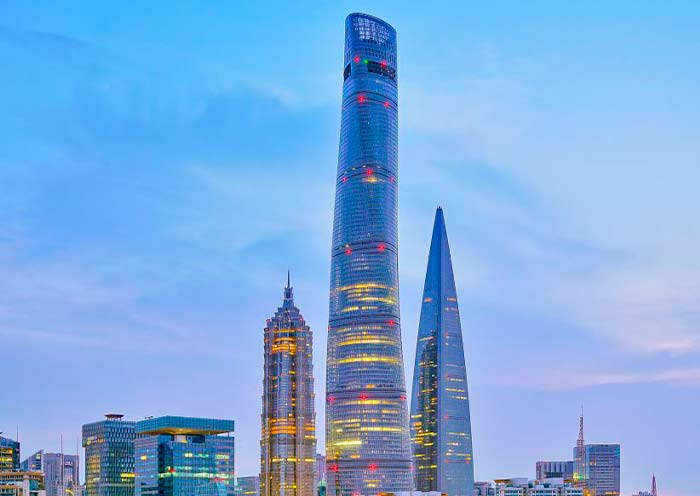
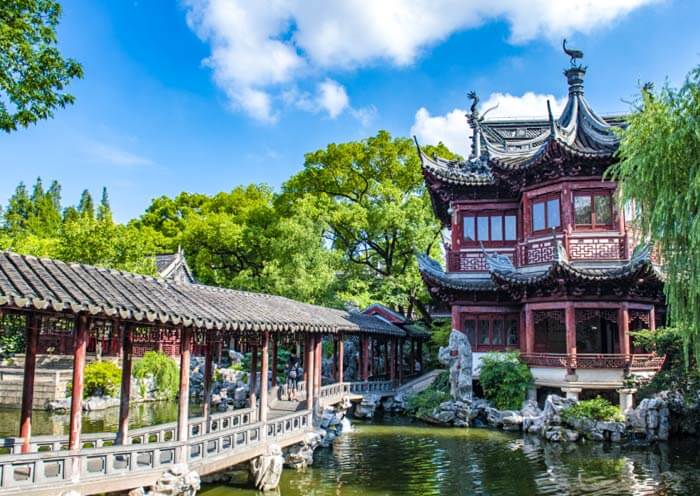
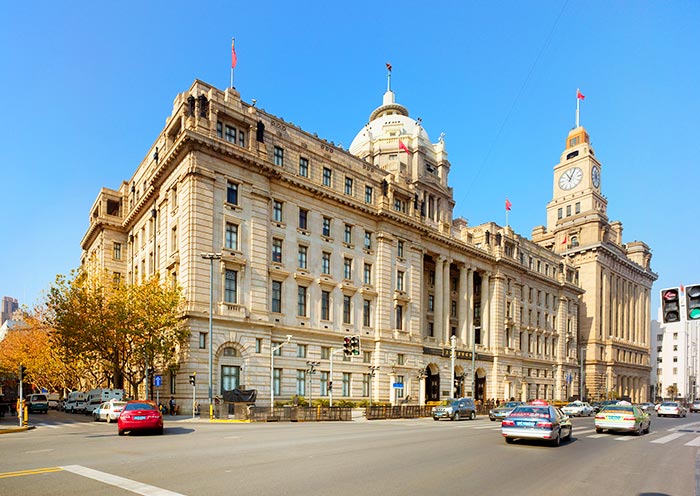
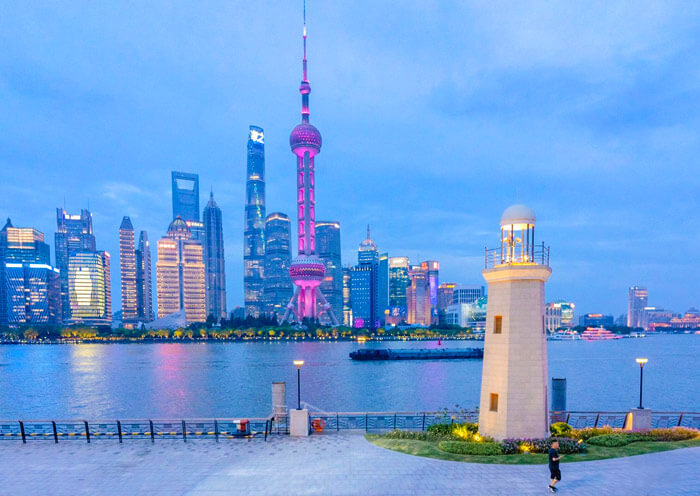
Today, you will head to the airport for your flight to Zhangjiajie (about 2.5 hours).
Welcome to Zhangjiajie, an incredible place where you can see Avatar Hallelujah Mountain in reality! Upon your arrival in Zhangjiajie, the local guide and driver will greet you at the exit of the airport, and then escort you to your hotel in Wulingyuan Area. Enjoy some free time on your own after the hotel check-in.
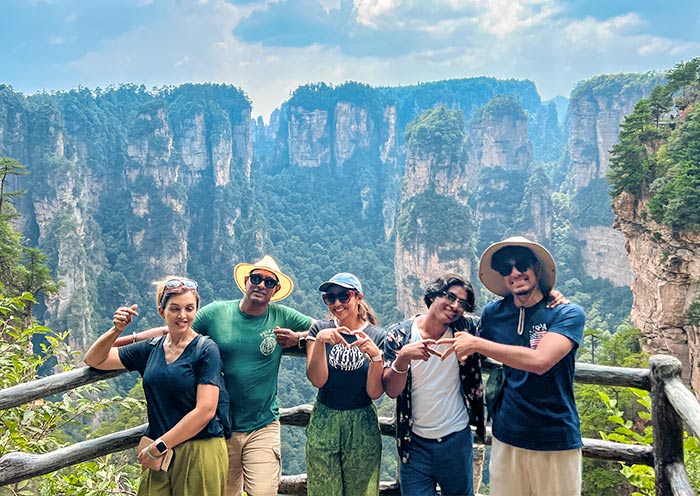
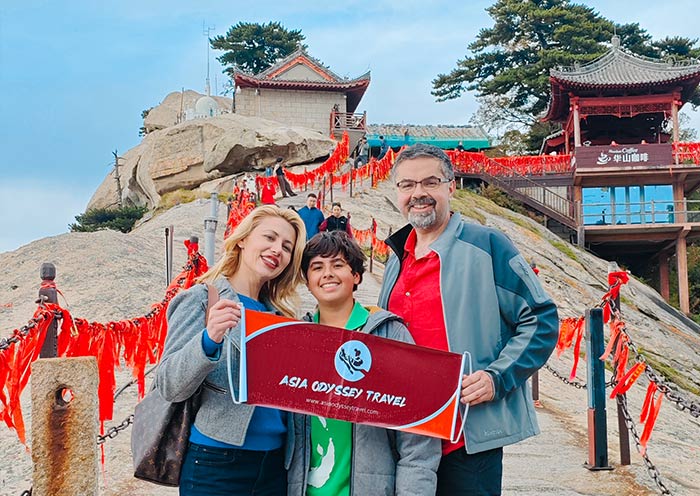
After breakfast, you will visit Zhangjiajie National Forest Park in Wulingyuan, where you will explore Yuanjiajie and behold the awe-inspiring Hallelujah Mountains (乾坤柱). Following lunch, you will be transferred to Tianzi Mountain Nature Reserve in Wulingyuan, where you will have the opportunity to explore Tianzi Mountain (天子山). Throughout the day, you will have ample time to immerse yourself in the breathtaking beauty of the Wulingyuan Scenic Area, a captivating haven of nature adorned with over 3,000 slender quartz sandstone pillars.
In the morning, your first destination will be Zhangjiajie National Forest Park, which is the first national forest park in China. This park showcases a unique landform characterized by towering stone peaks in various shapes, abundant vegetation, and a majestic landscape. You will board a sightseeing bus to reach the Bailong Elevator, widely known as the "World's No.1 Ladder". This elevator holds the Guinness World Records for being the tallest, fastest, and heaviest outdoor elevator for sightseeing. In just 66 seconds, you will ascend 326 meters from the valley bottom to the pinnacle of the pillar. Next, you will hike into a mysterious Pandora World - Yuanjiajie (袁家界), the actual filming location of the movie "Avatar" and the renowned Hallelujah Mountains (哈利路亚山) in reality. Don't miss the chance to capture the South Sky Pillar (南天一柱; Avatar Mountain), the Floating Mountain (1,074m;悬浮山), a towering vertical peak standing approximately 150 meters high from the deep valley, resembling a giant standing upright under the heavens. Take your time to walk along the Yuanjiajie Scenic Trail, which spans 3,500 meters and is built on the edge of a precipice. The trail is adorned with red prayer ribbons, and as you journey, you will be able to admire breathtaking natural wonders such as the Backyard Garden (后花园), Lost Soul Platform (迷魂台; The Best Natural Viewing Platform in Yuanjiajie), and the First Bridge Under Heaven (天下第一桥, a natural stone bridge and the landmark of Yuanjiajie). While immersing yourself in the extraordinary beauty, you will also deepen your understanding of Zhangjiajie's sandstone peaks and forest landform. This unique landscape is the result of specific geological structures, tectonic movements, and external forces, making it an exceptionally rare and remarkable phenomenon.
Next, board the sightseeing bus to reach the second tourist site - Tianzi Mountain Nature Reserve, which derives its name from Xiang Dakun (Xiang Tianzi), the leader of the local Tujia ethnic group who referred to himself as “Tianzi” (天子), meaning the Son of Heaven or the emperor in Chinese, during the early Ming Dynasty (1368-1644). Tianzi Mountain (天子山) is currently in the prime stage of its peak forest evolution and is renowned as the "King of Peaks". It gained fame as a fairyland in the popular Chinese TV Series - Journey to The West. Tianzi Mountain (1,262m) is well-known for its magnificent sunrise, the sea of clouds, red moon, winter snow, red leaves, and grand forest of peaks. You can proceed to Dianjiangtai Platform (点将台) to overlook the West Sea Peaks Forest (西海峰林), where rugged rocks rise from the depths of a misty canyon. You will not like to miss a view of the Imperial Writing Brush Peaks (御笔峰) which are a row of six stone pillars, each standing approximately a hundred meters tall. They are arranged in a square shape, intricately connected, and exhibit varying thicknesses from top to bottom, resembling the shape of a pen. According to legend, it is believed to be the pen used by Xiang Tianzi. Afterward, hike to He Long Park (贺龙公园) to visit the bronze statue of Marshal He Long and his warhorse, as well as the Tianzige Pavilion(天子阁). The Tianzige Pavilion, standing at 30 meters, offers a panoramic view of Tianzi Mountain, with its peaks and mountains stretching as far as the eye can see. The scene is truly spectacular. After the tour, return to your hotel for a well-deserved rest.
Notes: If you are traveling during the peak season, your guide may consider reversing the itinerary to avoid the largest crowds of tourists.
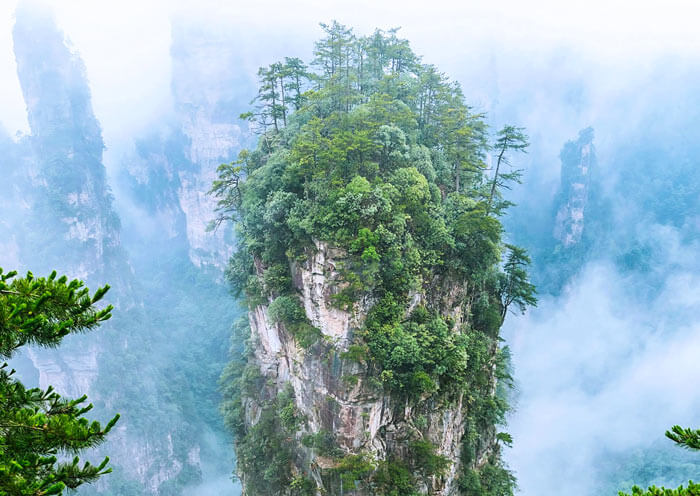
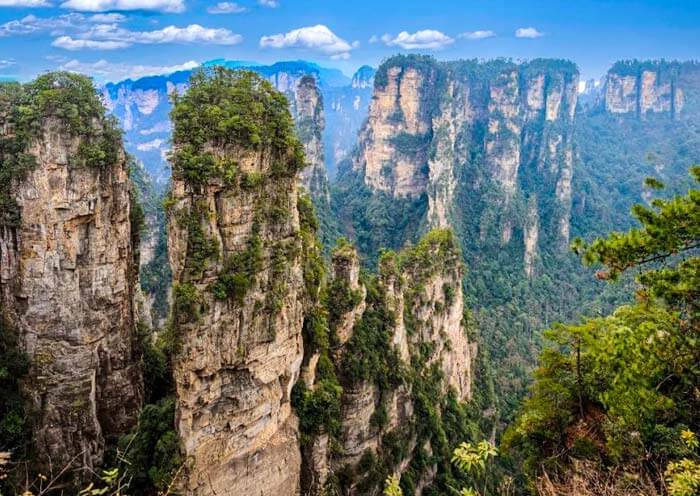
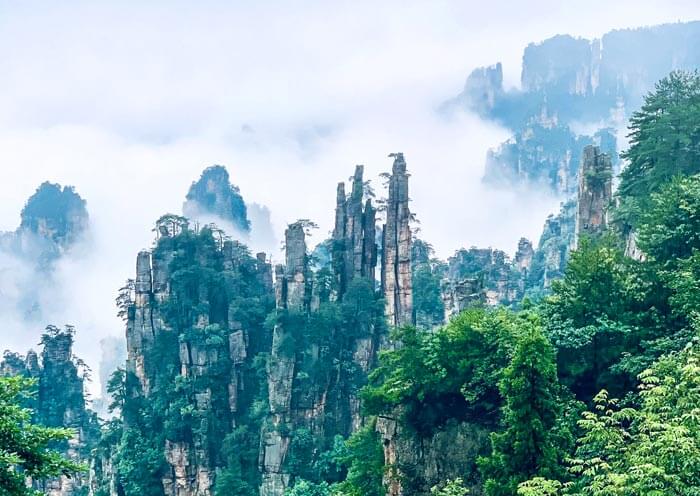
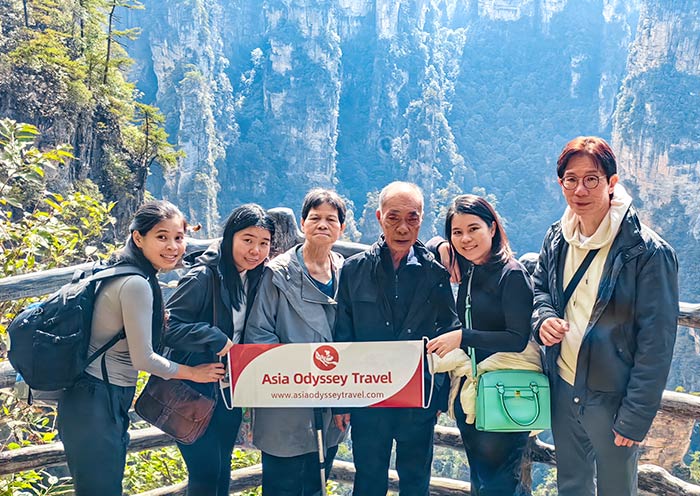
After breakfast, you will be transferred from Wulingyuan to Zhangjiajie Grand Canyon, which is approximately 56 km away and takes about 1.5 hours by car. There, you will have the opportunity to experience the breathtaking Grand Canyon Glass Bridge. Following that, enjoy a delicious lunch before proceeding to Baofeng Lake for a relaxing boat trip. In the late afternoon, you will be transferred back to Zhangjiajie City.
Well-known for its numerous waterfalls and fresh air in the valley, Zhangjiajie Grand Canyon is a must-visit scenic spot in Zhangjiajie, especially for photographers and adventurers. The Glass Bridge is the highlight of Zhangjiajie Grand Canyon, as it is the world’s longest and highest glass-bottomed bridge, stretching between two dramatic cliffs. It spans 375 meters in length and stands 300 meters high. Designed by Israeli Haim Dotan Architects, the bridge is capable of accommodating up to 800 people at a time. It is entirely made of glass, with no steel structure. In the middle of the bridge, there is a bungee jumping platform, which is the highest in the world. Here, you can experience the thrill of the highest bungee jump and fulfill your dream of flying like Spider-Man (bungee jump fees are self-pay). Exploring the Glass Bridge typically takes about 1 hour. People from around the world are excited to take on the challenge of walking on the Zhangjiajie Glass Bridge. While walking on the bridge, you can look down through the crystal-clear base, which hovers above a lush forest and a mist-filled canyon. Standing on the transparent glass feels like floating in the air, offering a superb panoramic view of the entire Grand Canyon. Come and take the skywalk on the glass bridge to showcase your courage to the world!
After you “tremble” on the glass bridge, move to the mirror-like Baofeng Lake to restore your inner peace. From the entrance, you will take a shuttle bus to reach the pier. Then, take a wooden boat ride on Baofeng Lake, a crystal-clear alpine lake. Spanning 2.5 kilometers in length, 200-1000 meters in width, and with an average depth of 72 meters, Baofeng Lake is nestled in a basin amidst the surrounding mountains. It is adorned with lush green trees and unique rock formations, creating an idyllic atmosphere for relaxation. As you leisurely cruise on the boat, you will be captivated by the reflections of the magnificent peaks in the water and serenaded by traditional folk songs performed by the local minority people.
After the tour, return to Zhangjiajie City, which is approximately 35 kilometers away and takes about 1 hour by car, for an overnight stay.
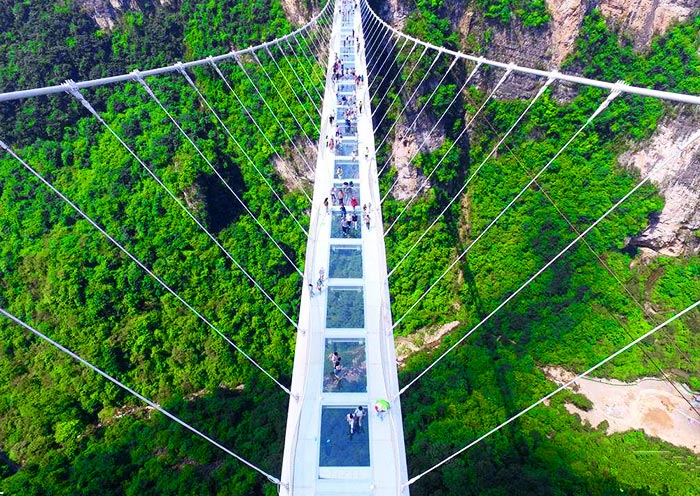
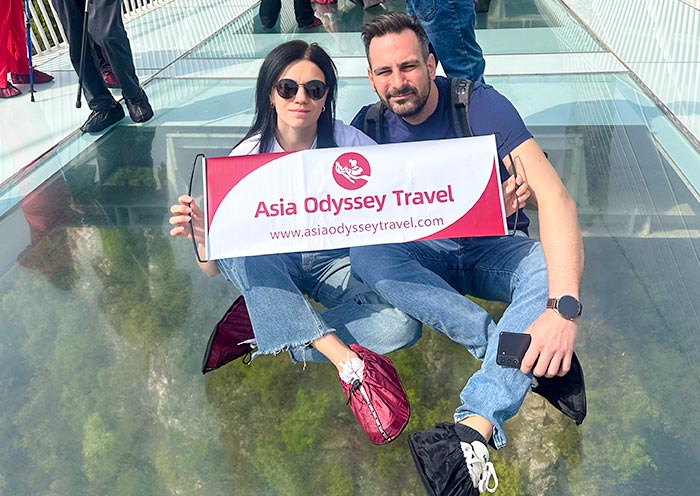
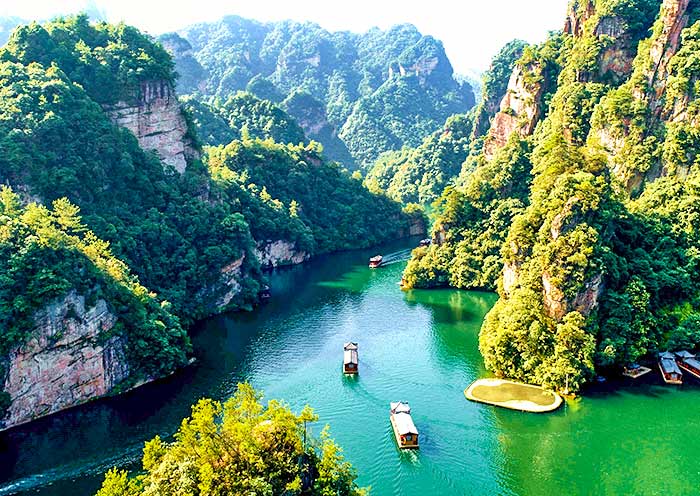
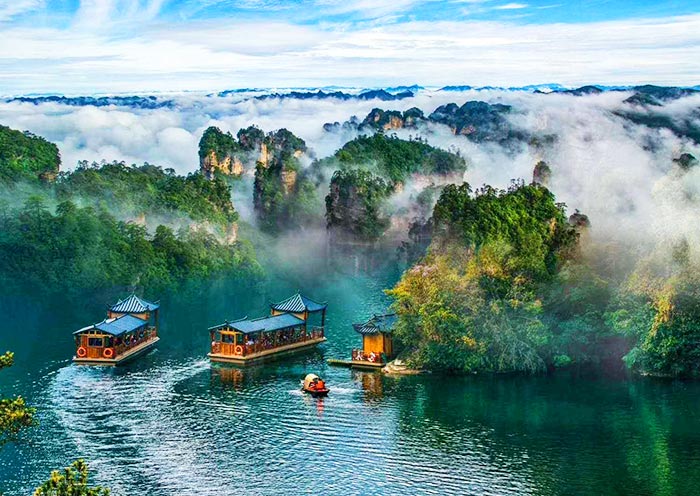
Today, you will spend a half-day tour of Tianmen Mountain in Tianmenshan National Forest Park, known as as the "Soul of Zhangjiajie" and the "No.1 Sacred Mountain of Western Hunan Province". Located only 8 kilometers away from Zhangjiajie city center, the Tianmen Mountain Scenic Area is unique in that it is suitable for people of all ages, and climbing is not necessary. There is the world's longest cable car, spanning 7,455 meters, which takes you directly to the mountaintop. Additionally, there is a small cableway available on the mountaintop. The only section that requires walking is the Tianmen Cave staircase, but don't worry, there is also an elevator available.
First, take the 30-minute cable car (7,455 meters) ride from Zhangjiajie City to the top of Tianmen Mountain. As you ascend, you'll be treated to a panoramic view of the winding mountain road with 99 bends (the Road to Heaven) and the breathtaking beauty of the bonsai gardens. Now, brace yourself for a thrilling challenge. Take a deep breath and step on the cliff path hanging on the mountainside. Walk along the Glass Walkway, a transparent glass path that stretches for 60 meters and hovers 1,430 meters above the bottomless valley, giving you a thrilling sensation of walking in the sky. Additionally, experience the 1.6-kilometer-long Cliff-Hanging Walkway, which is built along the edges of the mountain's summits. It's truly an amazing adventure! Next, you have the option to visit Tianmen Temple, a Buddhist structure that embodies the architectural style of the Qing Dynasty (1616-1912). It is surrounded by lush green forests, providing a serene atmosphere. And, you can also visit Yunmenxianding (云梦仙顶; 1,518m), the highest point in Tianmenshan National Forest Park, to enjoy a bird's eye view of the surroundings.
Afterward, go down by escalator from the mountaintop to Tianmen Cave, the world's highest natural mountain through the cave which spans 131.5 meters. Tianmen Cave, also known as Heaven's Gate Hole (天门洞), is frequently enveloped in swirling clouds and mist, and at other times, it is illuminated by ethereal rays of sunlight, resulting in a mesmerizing and ever-changing display of light and shadows. Take your time there to capture some beautiful photographs. Following that, you have the option to either walk down the 999 steps or take the elevator. Then, welcome back to another cable car station.
After the tour, your guide will escort you to train station for your high-speed train to Chengdu. Nihao! Welcome to Chengdu, the Hometown of Giant Pandas! Your private driver and guide will be ready for you when you arrive in Chengdu. Enjoy a trouble-free transfer to your hotel.
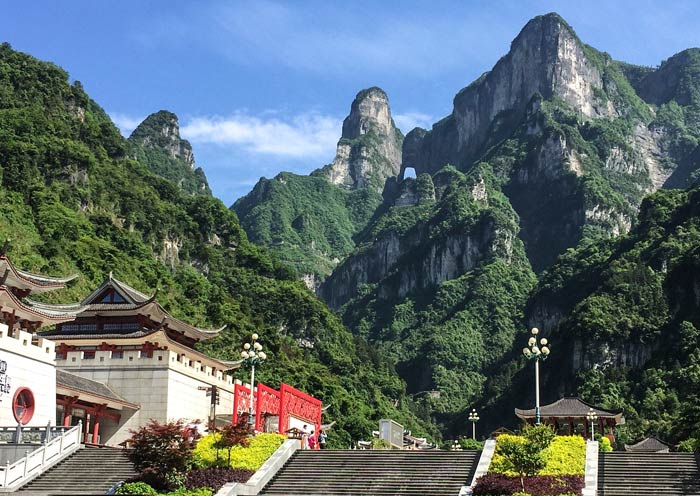
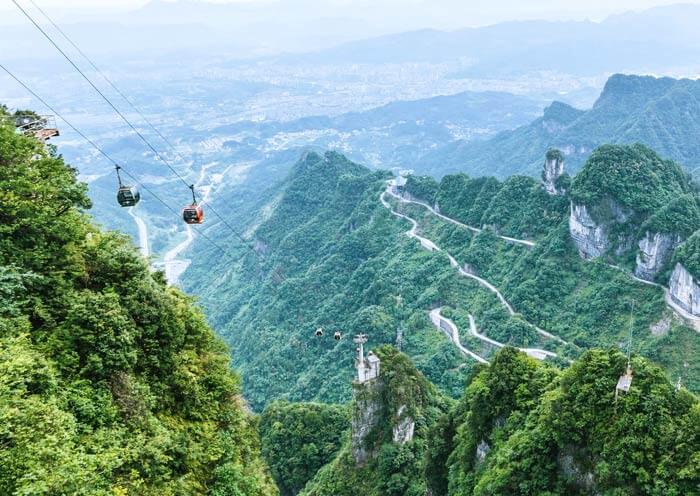
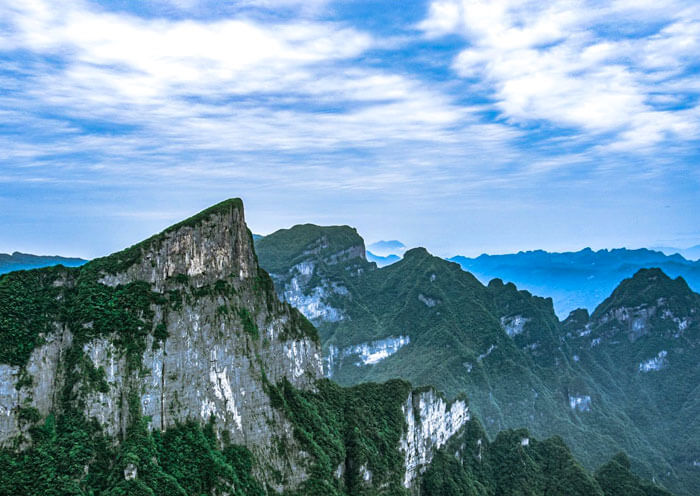
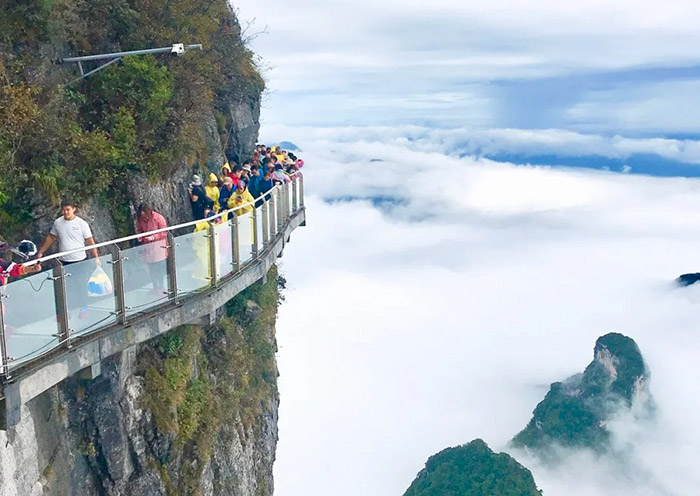
In the morning, you will meet your guide early at the appointed time in your hotel lobby. Since pandas prefer cool weather and are more active in the morning, we advise you to arrive early at Chengdu Research Base of Giant Panda Breeding (Chengdu Panda Base), located only about 17 kilometers away from the city center. This is the closest panda base around Chengdu for you fulfill your panda dream.
Chengdu Panda Base is the base with the largest population of captive giant pandas in the world, accommodating over 100 pandas of different ages. You can watch pandas playing, eating, climbing, sleeping, and in autumn, even see the pink newborn giant panda cubs in the Sunshine Nursery House and the Moonlight Nursery House. Discover the charming panda stars at this base, such as Hua Hua, the most adored and celebrated panda who has captured the hearts of the nation, and Zhi Ma, the real-life inspiration behind the panda mascot of the World University Games. Besides giant pandas, the cute red pandas (rarer than giant pandas) at the Red Panda Playgrounds are also the highlight of the Chengdu Panda Base. Nowadays, the panda base has also become an urban birding spot for local birders and kids to search for Red-billed Leiothrix, Black-throated Tit, Chinese Blackbird, Spotted Dove, White-browed Laughingthrush, and more. If you're interested, you can follow your guide to discover more about pandas' secrets through the Chengdu Giant Panda Museum, which is free to enter but requires advance reservation, and closed on Mondays.
Later, pay a visit to Wenshu Monastery, a 1400-year-old temple dedicated to honoring Manjushri Bodhisattva, the Symbol of Wisdom. It is one of the four great temples of the Chan (Zen) school of Buddhism in China. Before entering the temple, take a moment to capture the beauty of the Red Wall. Once inside, stroll leisurely through the temple's beautiful Qing Dynasty-style buildings and marvel at the Heavenly Kings Hall, Three Saints Hall, Grand Buddha Hall, Dharma Hall, and Scripture Library in that order. The temple's buildings, such as the bell tower and corridor, are seamlessly integrated with the main complex, creating a peaceful and immersive atmosphere where you can explore and reflect on the teachings of Buddhism.
In this afternoon, it's time to take a leisurely stroll inside Chengdu Renmin Park (Chengdu People's Park) like a local and enjoy the city's slow lifestyle. You can watch locals square dancing, practicing Taiji, singing Chinese folk songs, playing traditional Chinese musical instruments, as well as playing Chinese chess and boating on the lake. Don’t miss the blind date corner (a marriage market) where parents of unmarried adults flock to the park to find a partner for their daughter or son. Then, order a cup of fragrant jasmine green tea (a favorite of Chengdu locals) while sitting in a time-honored tea house, such as Heming Tea House. Chat with your friends, try Chengdu Ear Cleaning by professional ear cleaner, and see locals having fun playing mahjong.
When the sun sets, the nightlife on Jinli Street becomes even more charming. Known as the "Chengdu Riverside Scene at Qingming Festival Scroll" and ranked at the top of the world's most beautiful streets by CNN Travel in 2021, Jinli Street was first built during the Three Kingdoms Period (220-280) and was then known as "Shu Jinli". Walking on Jinli Street, you can appreciate the brilliant Chinese Traditional buildings of Qing Dynasty style (1616-1911), buy all kinds of souvenirs (Shu embroidery, lacquer products, folk handicrafts, calligraphy, and paintings), try delicious local snacks (Dan Dan Noodles, Egg Pancake, Bon Bon Chicken, Sweet Potato Noodles with Pork Intestines, Iced Jelly, Sour and Spicy Tofu Pudding), and discover intangible heritages like Sugar Painting, Shadow Puppy Play, Sichuan Opera Show...
After the tour, be transferred to your hotel in Chengdu downtown for a good rest.
Recommended Optional Evening Activities:
- Watch a wonderful Sichuan Opera performance which includes face changing, spitting fire, hand shadows, puppet show, dancing, singing and acrobatics. (usually from 20:00 to 21:30).
- Appreciate the city’s night view by boat (30mins) along the Jinjiang River, which winds through central Chengdu. ( 18:00~23:30)
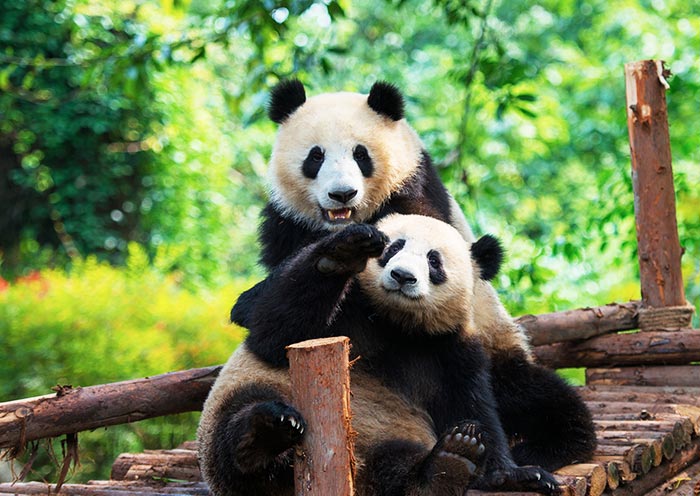
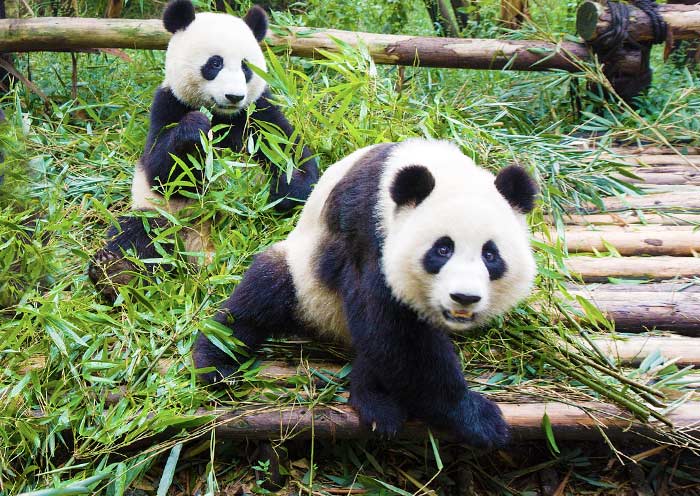
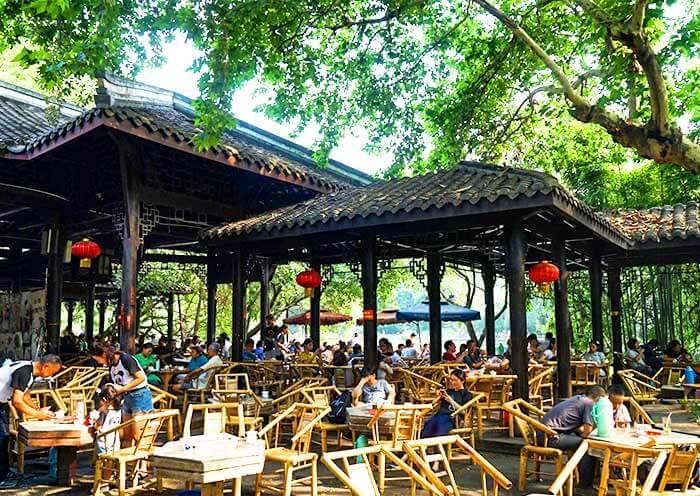
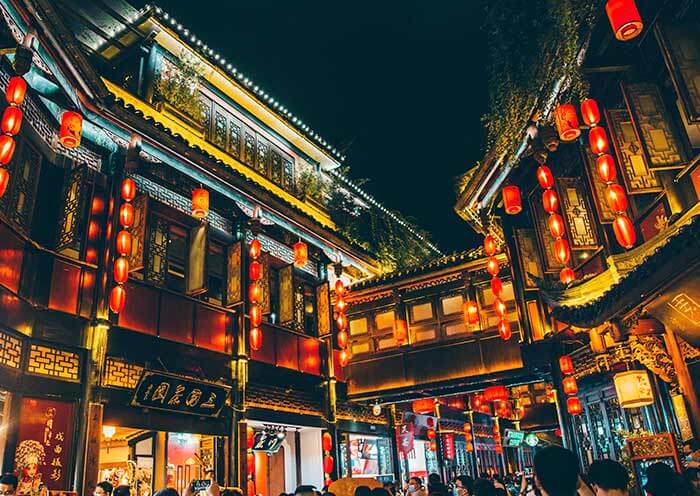
After breakfast, you will be driven about 2 hours to Leshan and visit the UNESCO World Heritage Site - Leshan Giant Buddha which is the largest and tallest stone-carved statue of Buddha in the world. Standing at the confluence of two rivers, the extraordinary, monumental 1200-year-old Buddha image at Le Shan is carved directly into the rock face. The monument stands 71m (233ft) tall and 28m (92ft) wide making it the largest ancient Buddha in the world. His shoulders span 28m, and each of his big toes is 8.5m long. His ears are 7m. He is indeed grand. There is a local saying: "The mountain is a Buddha and the Buddha is a mountain".
You will walk down and up and watch the Buddha from a very close distance. It allows you to see each part of Leshan Giant Buddha closely and presents you with a surprising experience with many ancient Buddhist temples, sculptures, caves and religious relics on the way up to mountain top near the head of the Buddha. (Recommended Optional Activity: The plank pathways are steep and narrow. If it is not convenient for you to walk, you can take a cruise (Leshan Buddha Boat Trip) to get a panoramic view and fully appreciate this Buddha’s magnitude on the river.) After the tour, drive back to Chengdu and have a good rest.
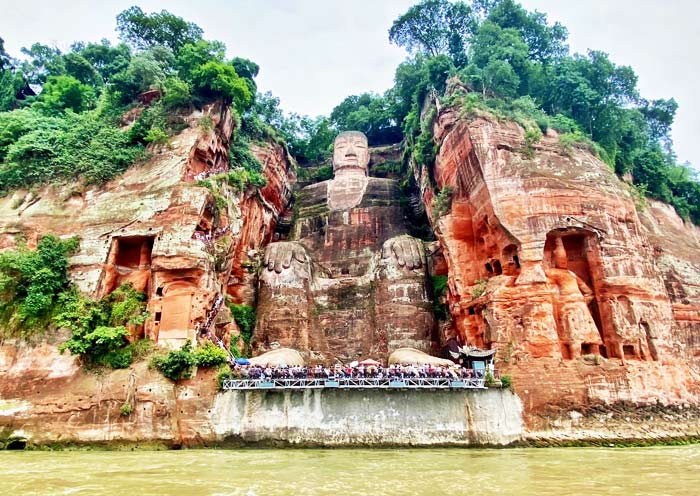
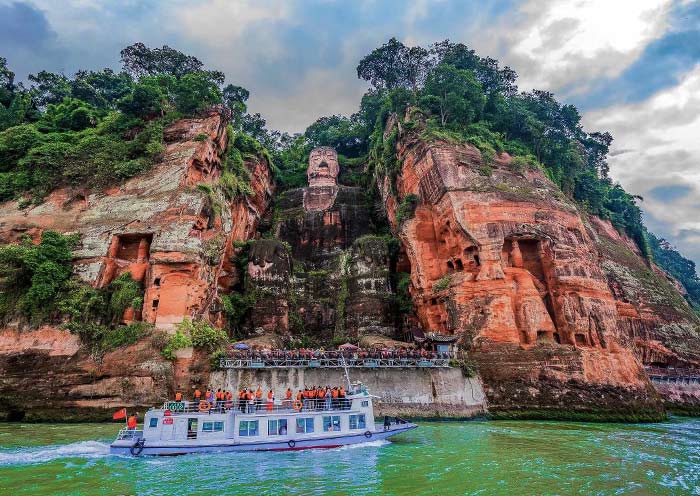
Today, you will head to the airport for your flight to Dali, Yunnan (about 1.5 hours). Welcome to Dali in Yunnan, home to the Bai ethnic minority! Upon your arrival at Dali Airport, our local driver will meet you at the appointed time, greet you, and escort you directly to the Dali Old Town area, where they will assist you with checking into your hotel.
Dali City (大理) is situated in western Yunnan, roughly 250 km (160 mi) northwest of Kunming, the provincial capital. Dali lies between the majestic Cangshan Mountains and the expansive Erhai Lake, providing stunning vistas and a variety of outdoor activities. The city is rich in history, once serving as the capital of the ancient Nanzhao and Dali kingdoms, and boasts many well-preserved historical sites like Dali Ancient Town and Three Pagodas, etc. Dali is home to the Bai ethnic minority, known for their rich traditions, vibrant festivals, and distinctive art. Beyond its physical and cultural allure, the slow, relaxed rhythm of Dali life invites visitors to unwind and enjoy a simpler, more peaceful way of living.
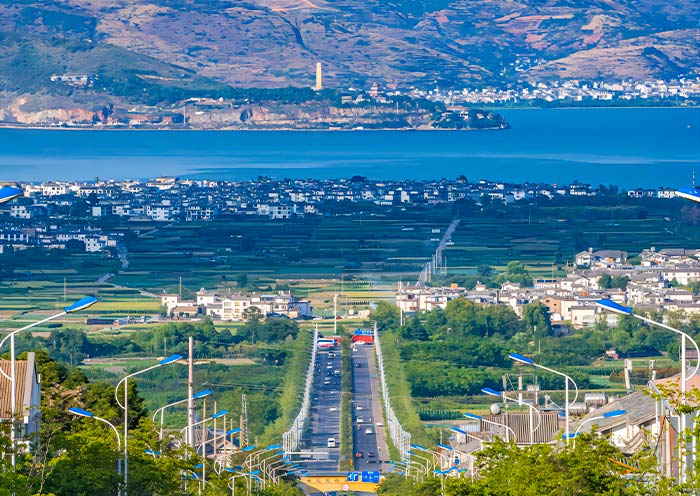
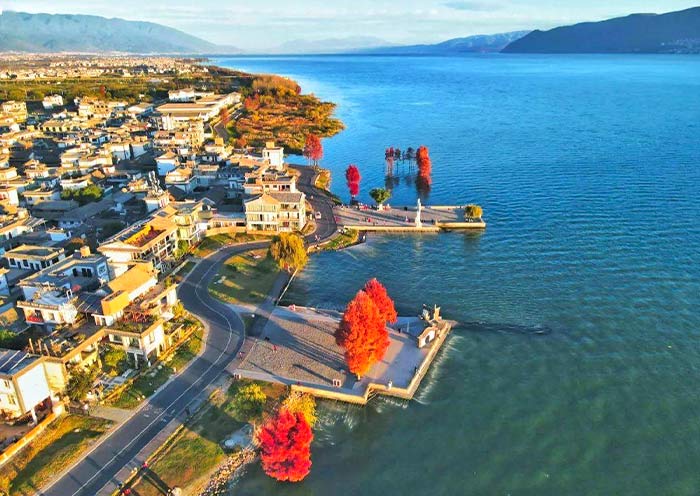
After breakfast, our guide will take you and your group to visit the Three Pagodas of Chongsheng Temple, offering a deep dive into Dali's rich history and spiritual heritage.
The Three Pagodas of Chongsheng Temple (崇圣寺三塔景区), set against the stunning backdrop of the Cangshan Mountains and overlooking Erhai Lake, are an iconic symbol of Dali. These three pagodas consist of a central pagoda, Qianxun Pagoda, which stands at 69 meters, flanked by two smaller pagodas. According to local legend, the pagodas were constructed to deter dragons that once inhabited the swampy area of Dali. Take time to appreciate the intricate architectural details that have allowed these structures to withstand the centuries. Don’t miss the picturesque reflection pond in front of the pagodas, offering stunning mirror images perfect for photos.
Next, visit Chongsheng Temple (崇圣寺), located just behind the pagodas. Once the royal temple of the Dali Kingdom of Nanzhao and nicknamed “the Capital of Buddhism,” it is also known as Tianlong Temple from Jin Yong’s Demi-Gods and Semi-Devils. As you tour the temple grounds, explore worship halls such as the Mahavira Hall and enjoy the tranquil atmosphere. From higher points, you can take in sweeping panoramic views of the Cangshan Mountains and Erhai Lake.
After that, take an electric cart along the ecological corridor of the west side of Erhai Lake (洱海). Named "Ear-shaped Sea" due to its unique form, Erhai is the second-largest highland lake in China and a central feature of the Dali Bai Autonomous Prefecture. Along the way, you’ll enjoy breathtaking views of the expansive blue lake framed by the majestic Cangshan Mountains. And, you’ll pass through charming Bai villages, green fields, and vibrant flowers.
In this afternoon, explore the captivating Dali Ancient Town (大理古城) independently. At dusk, the town’s lively night markets begin to stir. Relax at one of the many cozy coffee shops or bars. Originally established during the Ming Dynasty over 600 years ago, Dali Old Town once served as the capital of the Nanzhao and Dali Kingdoms. Stroll along main streets like Renmin Road and Foreigner Street, which feature well-preserved traditional Bai architecture, alleyways, unique workshops, temples, and even antique-flavored schools and churches. The blend of history and culture creates a truly unique experience.
After the tour, return to your hotel in Dali.
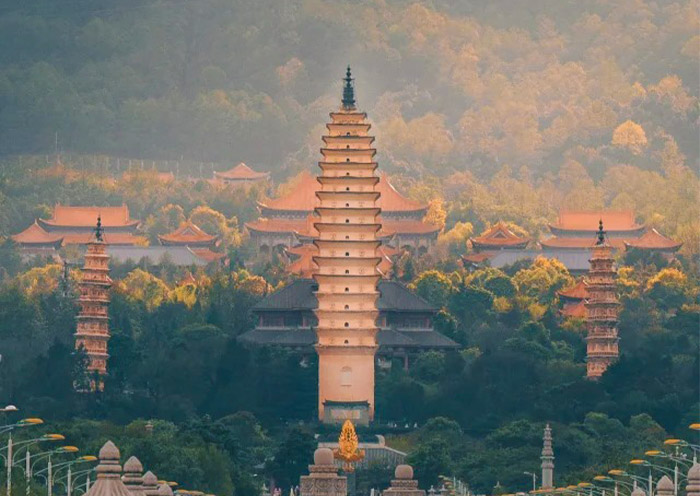
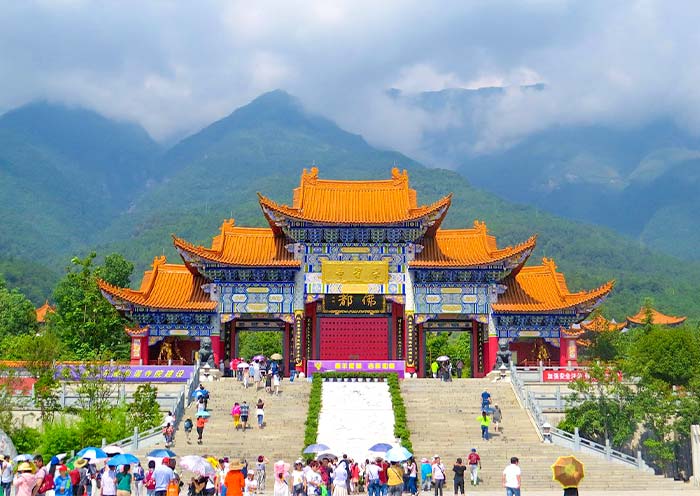
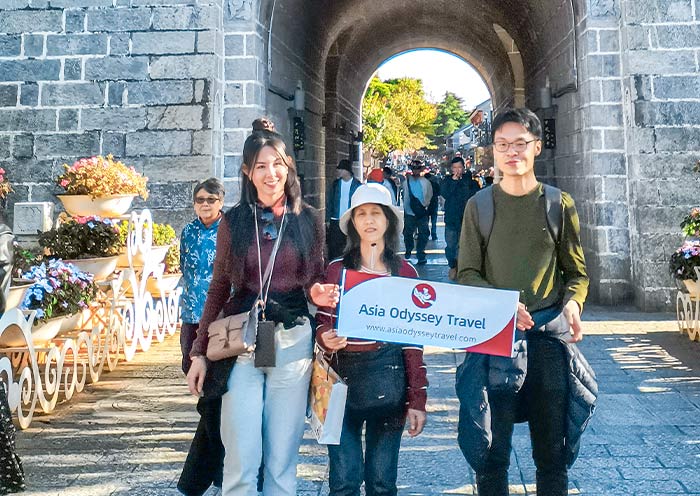
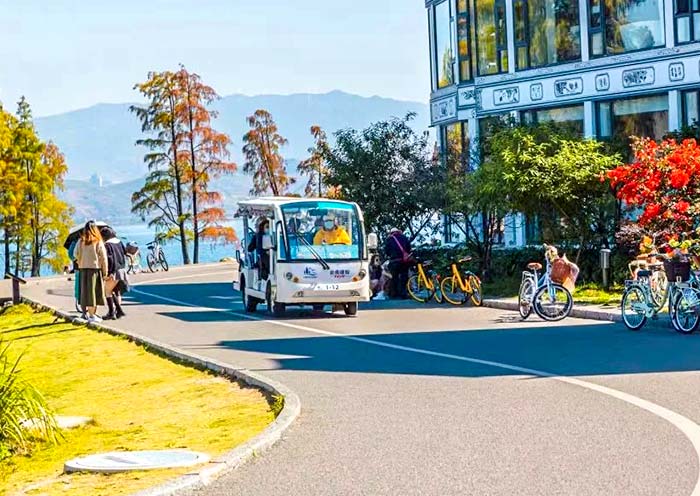
After breakfast, let's experience the lively atmosphere of Xizhou at the local market. There's no better way to get under the skin of a place than by exploring its local market, here you can witness firsthand the local customs and mouth-watering dietary habits. This market has been a gathering spot for over a century where locals trade a wide array of goods - from farm-fresh produce and unique handicrafts to tantalizing local snacks. Yunnan, fondly known as the "Kingdom of Flora and Fauna," is a place where flowers and insects find their way into the local cuisine! Don't be surprised if you come across unfamiliar vegetables, fruits, and wild mushrooms. While you're there, don't miss your chance to try local favorites like Xizhou baba (a tasty stuffed pancake, savory or sweet) and a cup of freshly brewed Yunnan coffee.
After exploring the market, take a walking tour of Xizhou Ancient Town (喜洲古镇), acclaimed as the "Premier Town of the Bai people" due to its exceptionally the largest and best-preserved cluster of Bai ethnic group's traditional dwellings. Xizhou Village is ideal for those seeking a more authentic and tranquil cultural experience of Bai life and traditions. As you wander through the village, visit some of the old mansions and Bai residences like Yan Family Compound (严家大院), you'll notice the most distinctive features of Bai architecture known as "Three-Room and One-Screen Wall (三房一照壁)" and "Siheyuan/Courtyard (四合院)”. These homes are adorned with exquisite details such as flying eaves, ornately carved wooden doors and beautifully painted walls typical of Bai aesthetics. Don't miss the "Three Courses of Tea" ceremony (三道茶), a Bai cultural practice you must experience. This tea ceremony, which transitions from bitter to sweet to an aftertaste, encapsulates the philosophy of "embraces hardship, values the sweetness that follows struggles, and reflects on the profound aftertastes that life experiences leave behind". In addition, Xizhou is surrounded by vast wheat fields, creating a striking contrast against the grey-and-white tones of the Bai minority dwellings. This harmonious coexistence with nature provides a healing, wonderful feeling. The beautiful scenery, especially in spring and autumn, draws tourists to appreciate Xizhou's charms.
Next, make your way to Zhoucheng Village, which is just a short drive from Xizhou. Zhoucheng Village (周城), is often referred to as the “Hometown of Bai Embroidery ”. It is Bai people village, famous for its traditional tie-dye art (扎染), which has been preserved and passed down through generations. The Bai tie-dye technique has been listed as a National Intangible Cultural Heritage. Explore workshops within the village that showcase exquisite Bai embroidery. These pieces often depict traditional motifs such as lotus flowers, fish, and birds, which carry significant cultural symbolism. Engage with the local craftsmen and women, many of whom have inherited their skills from generations. If you're lucky, you may witness live demonstrations of Bai embroidery and tie-dye techniques.
In this afternoon, your group will be transferred to Shangri-La (only with the driver), located in the northwest of Dali city, about 300km, 4-hours’ drive. Welcome to Shangri-La (香格里拉)! Nestled in the northwestern part of Yunnan Province in Diqing Tibetan Autonomous Prefecture, Shangri-La was formerly known as Zhongdian. This charming paradise is considered the real Shangri-La on earth. Inspired by the mythical paradise described in James Hilton's novel "Lost Horizon", Shangri-La lives up to its name. Hidden among majestic mountains, it beckons you with a landscape shrouded in mystery and legend, a place where fairytale scenery awaits.
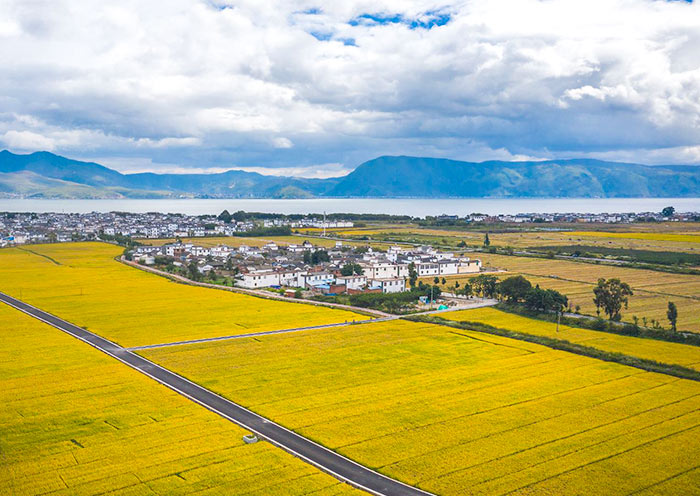
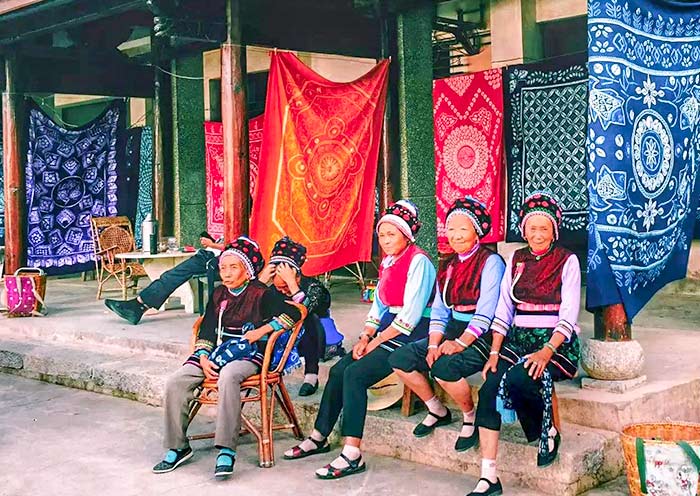
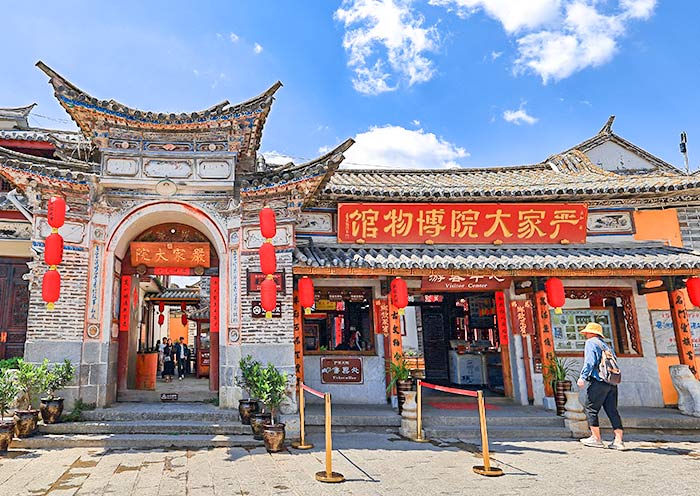
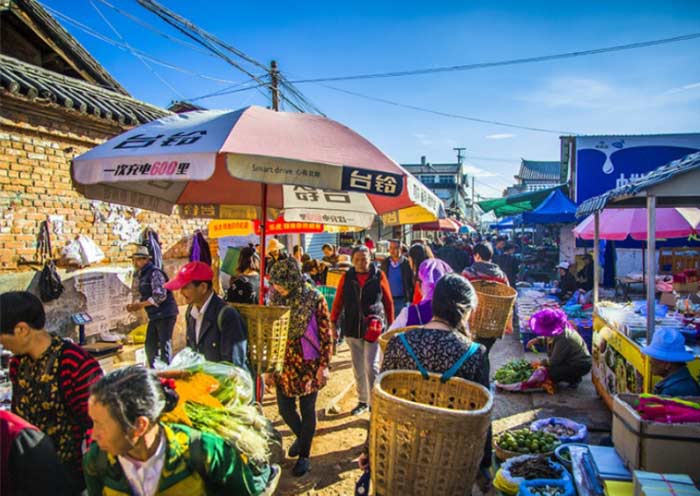
In this morning, your group will enjoy a scenic drive (about 40 minutes) to Pudacuo National Park (普达措, also known as Potatso National Park), the first national park in China. Situated on the vast Tibetan Plateau and forming an important part of the "Three Parallel Rivers" scenic spot, the park is renowned for its pristine landscapes. Encompassing scenic hills, meadows, lakes, diverse plant life, and abundant bird species, the park is also home to over 100 endangered animals including leopards, cranes, macaques, and lynxes. Your journey begins with a sightseeing bus ride to Shudu Lake (altitude: 3,705 meters), the park's largest lake famed for its crystal-clear water and serene beauty. Take a leisurely hike around the well-maintained path suitable for most fitness levels. Afterwards, hop on a sightseeing bus to Bita Lake (altitude: 3,568 meters). A jewel nestled amidst the mountains and considered sacred by the local Tibetans, Bita Lake's turquoise waters and snow-capped backdrop create a picture-perfect scene. Take another short hike around the lake, a trail that leads you deeper into the heart of the park.
After that, our local guide will take your group to visit Songzanlin Monastery (松赞林寺, also known as Ganden Sumtsenling Monastery), a sprawling complex perched at an altitude of 3,380 meters. Founded in 1679 by the Fifth Dalai Lama, Songzanlin Monastery is the largest Tibetan Buddhist monastery in Yunnan Province. Inspired by the Potala Palace in Lhasa, it's often referred to as the "Little Potala Palace". The monastery's architecture is a fascinating fusion of Tibetan and Han Chinese styles. Currently, around 700 monks reside in its 200 associated houses. Ascend the steps and enter the monastery's three grand halls: Zhacang Hall (the central and highest hall), Jikang Hall (dedicated to Tsongkhapa), and Sakyamuni Hall (dedicated to Shakyamuni Buddha). Here, you'll witness Tibetan monks chanting and meditating, enveloped in the monastery's solemn atmosphere. The climb will be rewarded with a breathtaking panoramic view of the entire monastery complex and the beautiful Lamuyangcuo Lake.
In this afternoon, your group will visit Dukezong Ancient Town (独克宗古城), with over 1,300 years history, which is the best-preserved and largest Tibetan residential cluster in China. It holds the distinction of being the oldest castle along the Tea Horse Road. The name "Dukezong" translates to "Moonlight Castle built on a Stone" and it is also known as the City of Moonlight. Here, you will discover a world of traditional Tibetan houses, ancient temples, beautiful pagodas, and narrow, winding alleyways, all adorned with iconic Tibetan prayer flags of various colors. Take a hike up Guishan Hill and join the locals in turning the world's largest prayer wheel for good luck and happiness. From this vantage point, you can capture a breathtaking panoramic view of the entire town. Afterwards, wander through the distinctive alleys and immerse yourself in the rich tapestry of Tibetan culture.
After the tour, be escorted to your hotel in Shangri-La.

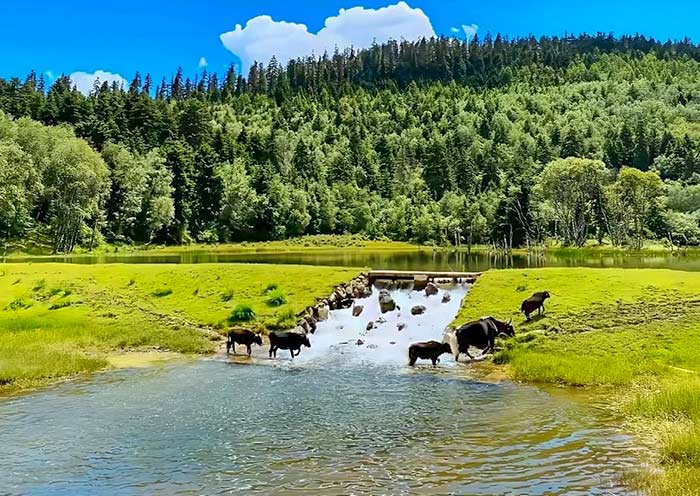
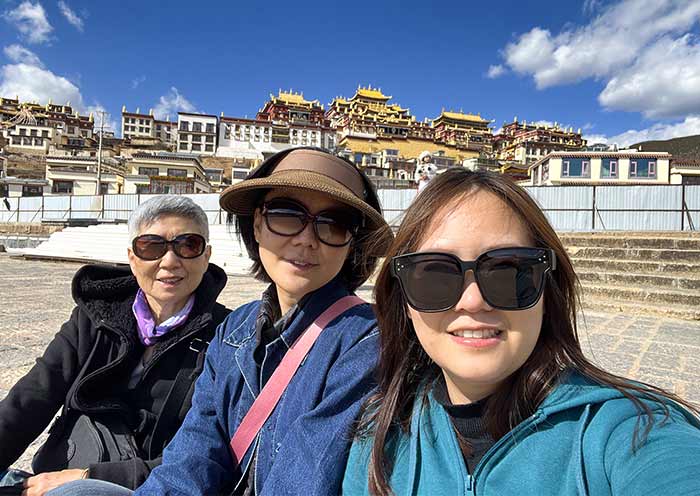
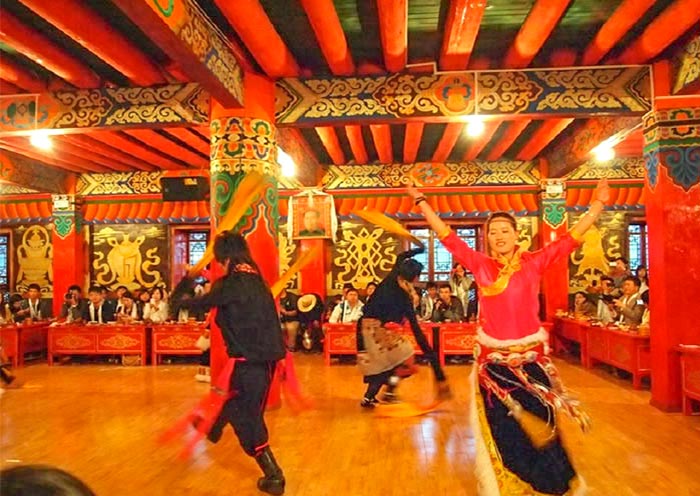
This morning, your group will be escorted from Shangri-La to Lijiang, with opportunities to explore breathtaking natural landscapes along the way.
During the drive, you'll stop to visit the Upper Section of Tiger Leaping Gorge (上虎跳, altitude: 1,800 meters). According to legend, this spot earned its name when a tiger, chased by a hunter, made a legendary leap across the narrowest point of the gorge, cornered by the rushing Jinsha River (part of the Yangtze River) below. One of the deepest gorges in the world, Tiger Leaping Gorge offers a stunning view of the roaring Jinsha River and the natural power of its waters. With Jade Dragon Snow Mountain (5,596m) and Haba Snow Mountain (5,386m) towering on either side, you’ll be immersed in the beautiful and diverse landscapes. You'll walk along the plank road, which has both ascending and descending sections (Optional: For a fee, you can take the lift to conserve energy).
Later, make a stop at the First Bend of the Yangtze River (长江第一湾), where you’ll witness the majestic river making a dramatic 90-degree turn from south to east in just 1 kilometer. Climb up to the observation deck for panoramic views of the Yangtze River.
Afterward, your group will proceed to Lijiang. Upon arrival, you’ll have some time to explore Lijiang Old Town (丽江古城), also known as Dayan Old Town. With over 800 years of history, Lijiang Old Town was once a bustling trade center on the famous "Old Tea Horse Caravan Trail." Its labyrinthine layout features cobbled streets, traditional wooden houses with upturned eaves, ancient bridges, and an intricate network of waterways. Afterward, head to a higher vantage point for a breathtaking panoramic view of the old town, with snow-capped mountains forming a stunning backdrop. Take a short walk to Sifang Street (四方街), the town’s most famous square, where you can explore Naxi handicrafts, souvenirs, local specialties, and enjoy the lively atmosphere of bustling bars with music filling the streets.
Later, visit Black Dragon Pond Park (黑龙潭公园), located at the northern edge of Lijiang Old Town. This scenic spot offers stunning views of the surrounding landscape, with the majestic Jade Dragon Snow Mountain in the background. On clear days, the reflection of the snow-capped peak on the tranquil Black Dragon Pool creates a breathtaking sight.
Stay overnight in Lijiang Old Town.

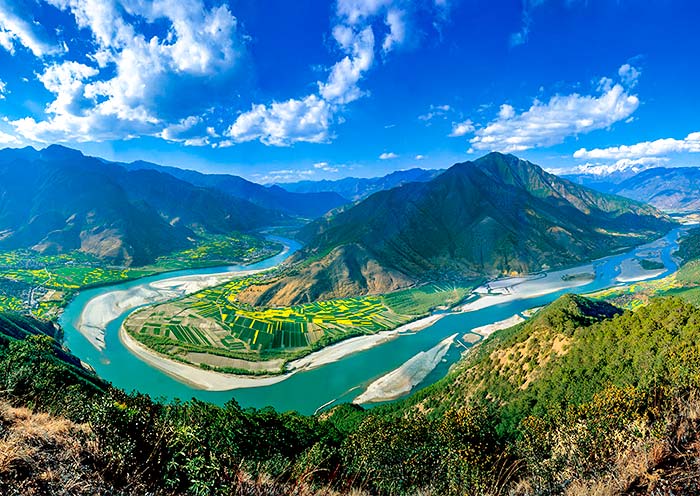
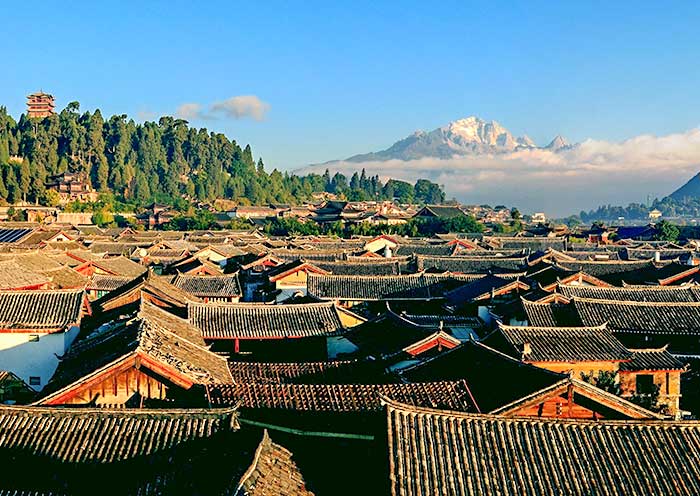
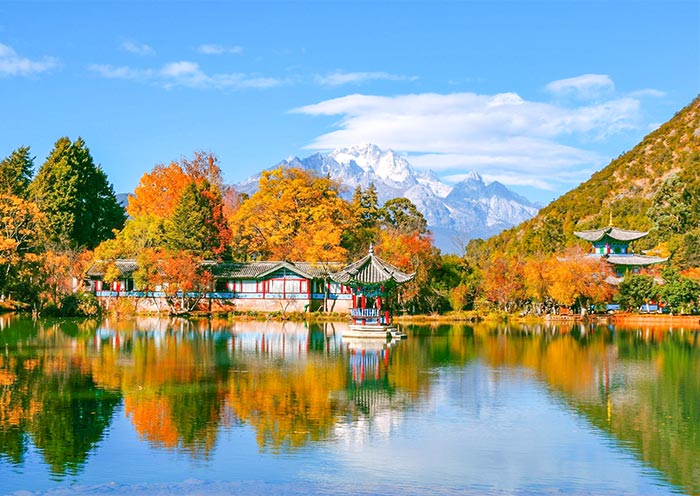
After breakfast, it's time to venture beyond Lijiang Old Town and explore the renowned Jade Dragon Snow Mountain (玉龙雪山). This majestic mountain is famous for its towering peaks, stunning scenery, and abundant biodiversity. It was designated as a UNESCO World Heritage site in 2003. The mountain gets its name from its resemblance to a stainless jade dragon, especially during winter when its peaks are covered in thick snow.
The crown jewel of the region is the sight of 13 snow-capped peaks, with the highest peak named Shanzidou, reaching an impressive elevation of 5,596 meters (18,360 ft). To fully experience the mountain, it is recommended to take a 10-minute cable car ride up to Spruce Meadow (云杉坪), situated at 3,240 meters. The cable car ride itself is a remarkable experience, offering breathtaking views of the surrounding mountains and valleys. Once you reach the top, you'll be greeted by awe-inspiring panoramic views and have the opportunity to explore meadows and pristine forests. After the tour, take cable down the mountain.
Afterward, take a sightseeing bus to Blue Moon Valley (蓝月谷). The valley is a breathtaking sight, with its almost surreal turquoise blue water, reflecting the majestic Jade Dragon Snow Mountain in the background. This valley boasts four lakes and a White Water Terrace. Each lake presents unique scenery, but the most beautiful one is the Jade Liquid Lake. The best time to admire the splendor of Blue Moon Valley is during a sunny midday when the lake's water, under the radiant sunlight, becomes as clear and blue as a mirror. You can capture many awesome photos here.
Leaving the Jade Dragon Snow Mountain, you'll continue your journey to Baisha Village (白沙村), the birthplace of the Mu chieftaincy and the ancient capital of the Naxi ethnic group. Part of the UNESCO World Heritage Site "Old Town of Lijiang", Baisha Village offers a unique glimpse into the Naxi group’s rich history and culture. Here, you can visit the Baisha Murals (白沙壁画), showcasing a unique fusion of Buddhist, Taoist, and local Naxi religious elements, reflecting the diverse spiritual beliefs of the region. These murals are found within several temples, including the Dabaoji Palace, the Liuli Temple, and the Wenchang Palace.
Then, if your energy permits (optional), on the way back to Lijiang, you can make a stop at Shuhe Ancient Town (束河古镇). It is an important stop along the legendary Tea Horse Ancient Road. Unlike the bustling Lijiang Old Town, Shuhe offers a tranquil escape, with charming shops selling locally-made crafts lining the narrow cobbled streets. The gentle murmur of water flowing through canals and the aroma of Naxi cuisine wafting from cozy teahouses create a peaceful atmosphere where time seems to slow down. (Note: You can try local snacks like Chicken Bean Cold Noodles, Grilled Milk Fan, Fresh Flower Cake, Yunnan Ham Mooncake, and Jar-Roasted Rose Milk.)
After the tour, head back to Lijiang.
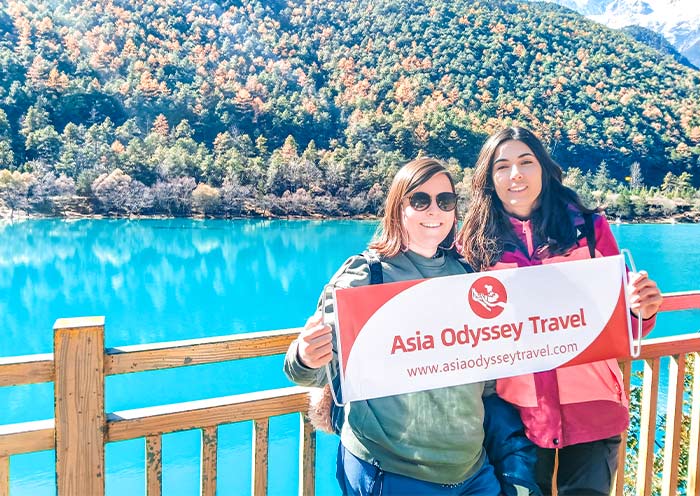
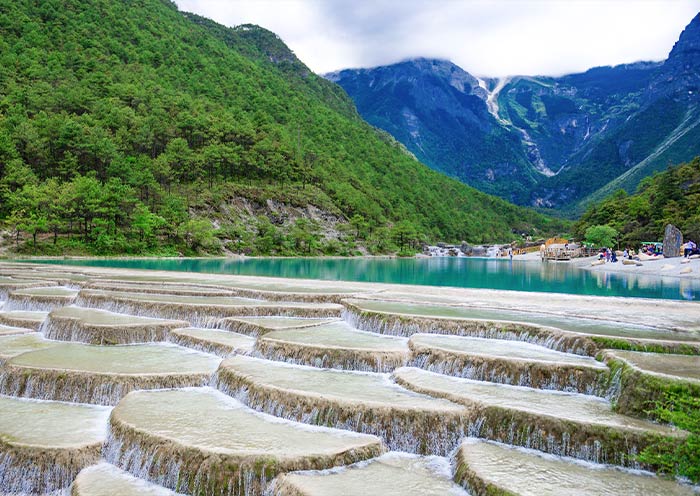
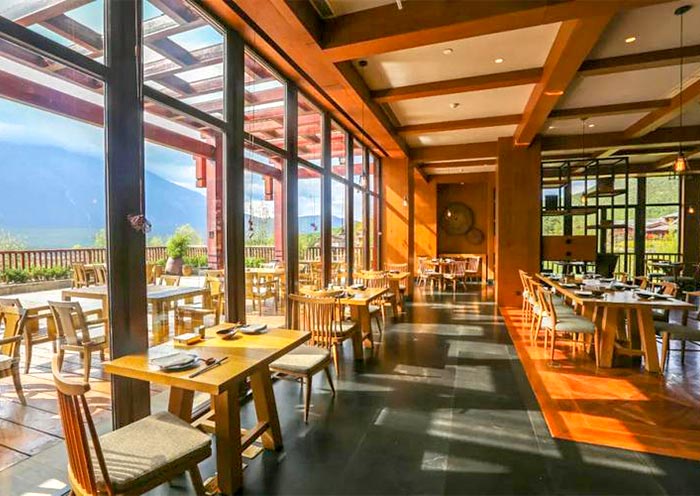
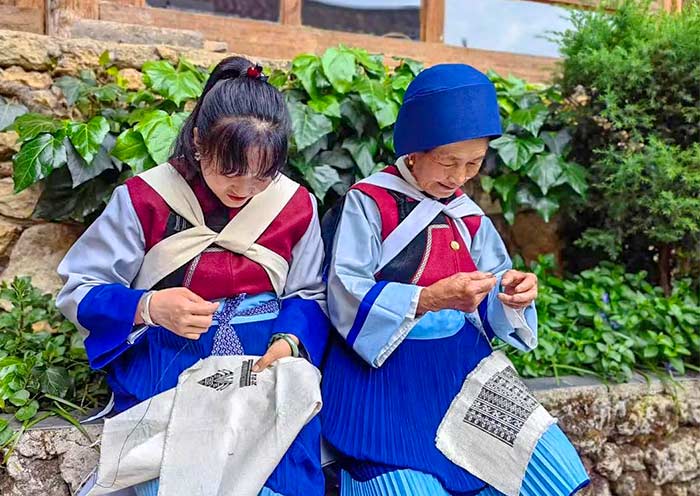
On this day, you will have some free time till your driver meets you in the hotel lobby and escorts you to the airport for your flight to Xian.
Welcome to Xian, the capital of 13 ancient China dynasties! Upon your arrival in Xian, the local driver will greet you at the exit of the airport, and then escort you to your hotel in Xian downtown area. Enjoy some free time on your own after the hotel check-in.
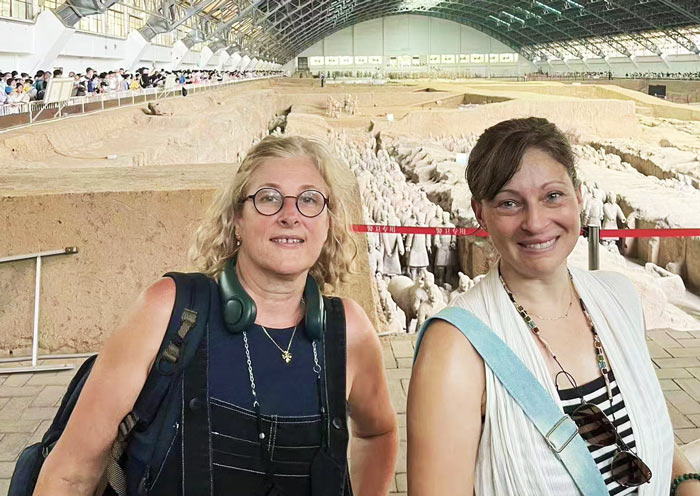
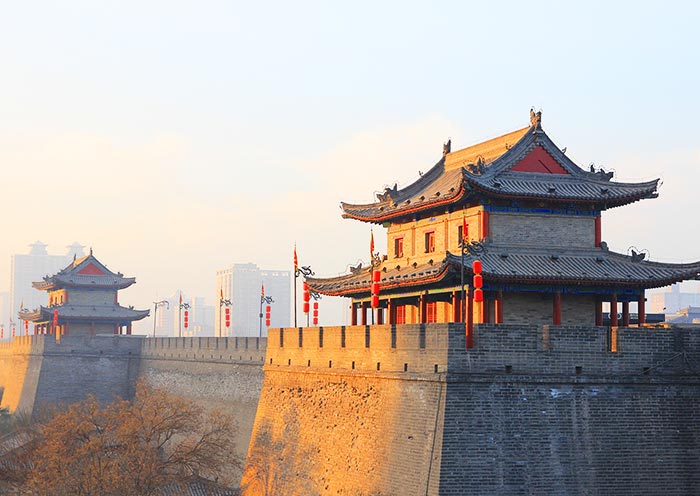
After breakfast, your guide and driver will pick you up at your hotel. Drive about 40km (about 1 hour) to uncover one of the greatest archaeological discoveries in the world - the Terracotta Army Museum, built by the first emperor of China, Qin Shihuang, to protect him in the afterlife. Around 8,000 vivid life-size Terracotta Warriors have been found so far. First, visit the largest and most imposing pit, believed to contain over 6,000 terracotta figures of soldiers and horses. You will be amazed by this subterranean life-size army of thousands standing silently to guard the emperor. Marvel also at the fabulous artistic skills of ancient Chinese artisans. Next, move to another pit where you can see around 1,300 warriors and horses. Examine the ancient army formation, including the kneeling and standing archers, the chariot war array, and numerous troopers holding weapons.
After lunch, head to visit the Ancient City Wall, also known as the Fortification of Xian, representing one of the oldest, largest, and best-preserved Chinese city walls. Spend time leisurely walking the wall and enjoying its inner and outer walls, watchtowers, and moat, taking in panoramic views of modern Xian, there, you will also visit the awe-inspiring Bell Tower (or Drum Tower), a landmark from the Ming Dynasty dating back 600 years, will be beautifully illuminated, creating a captivating backdrop for stunning photos showcasing the harmonious blend of ancient history and modernity in Xian. In the evening, you may also have the chance to visit the lively Bell & Drum Tower Square (Zhongulou Square), allowing you to immerse yourself in Xian's vibrant nightlife like a local.
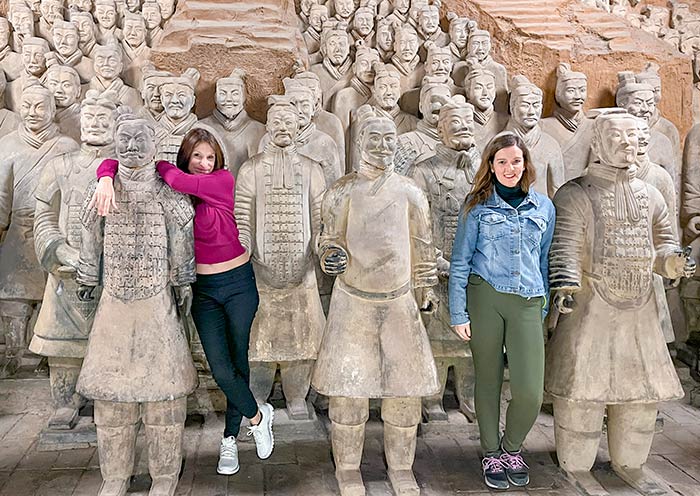
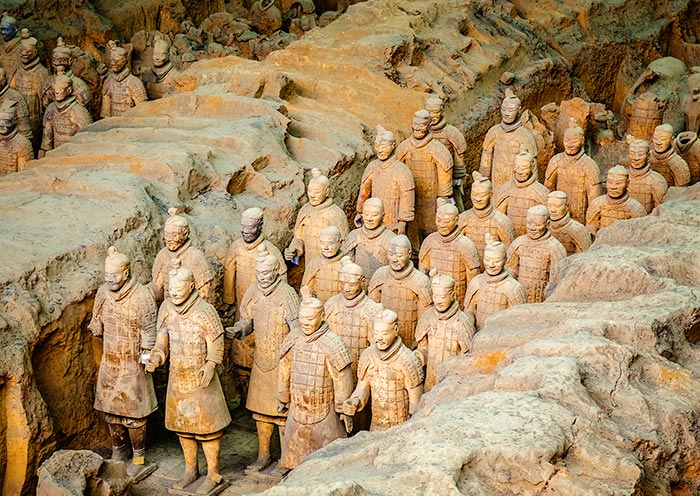
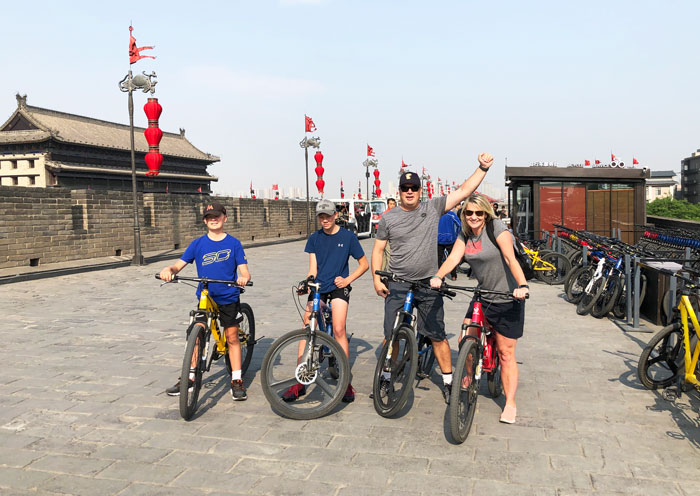
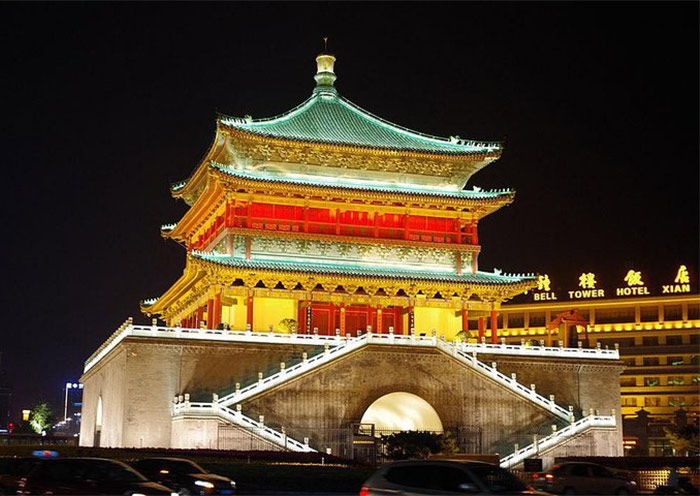
This morning, you will go to visit the Giant Wild Goose Pagoda, one of Xi'an's most recognizable landmarks and symbol of the magnificence of the Tang Dynasty. This seven-story pagoda standing in the tranquil Da Ci'en Temple is one of China's best examples of a Tang-style pagoda (squarish rather than round). It was completed in AD 652 to house Buddhist sutras brought back from India by the monk Xuan Zang. His travels inspired one of the best-known works of Chinese literature, Journey to the West. Later, you will have the opportunity to explore the vibrant and bustling Muslim Quarter (Muslim Street). This historic quarter, situated just behind the Drum Tower about 430 meters west of the Bell Tower in downtown Xian, has been around for over 1,000 years.
After the tour, you will be transferred to the train station for your high speed train to next destination - Beijing. Upon arrival in Beijing, your driver will meet you at the train station and escort you to your hotel. The rest of the day is free on your own so you can explore by yourself around your hotel.
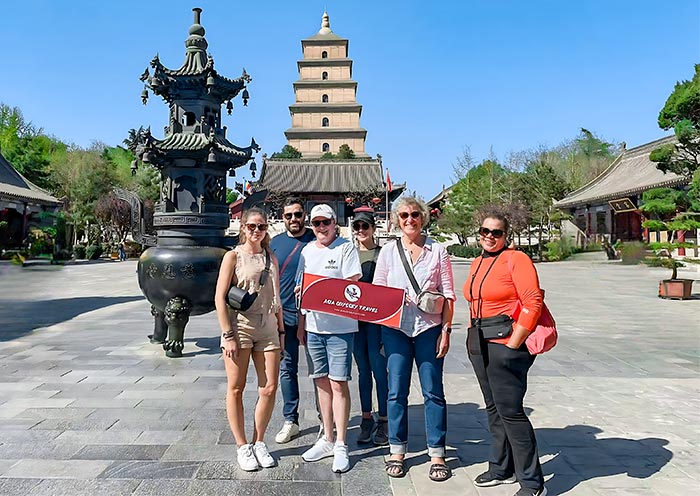
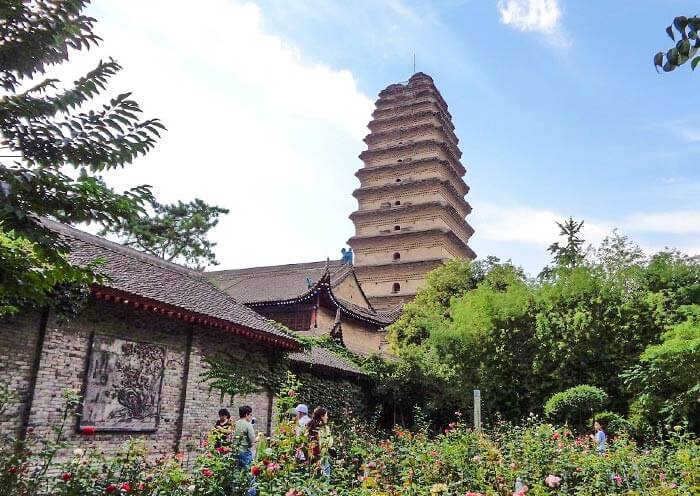
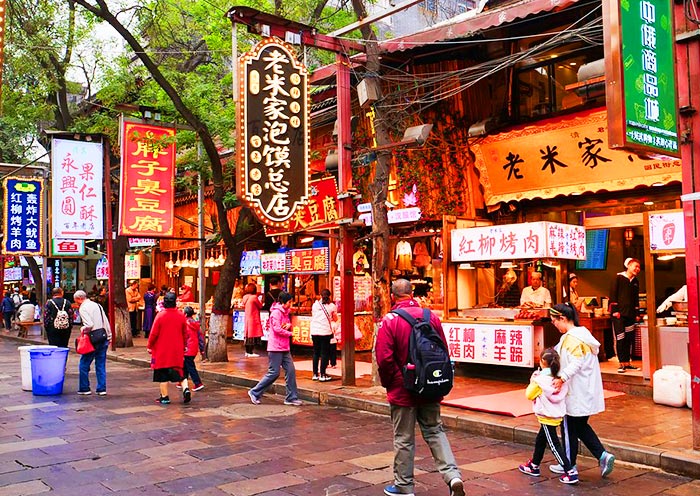
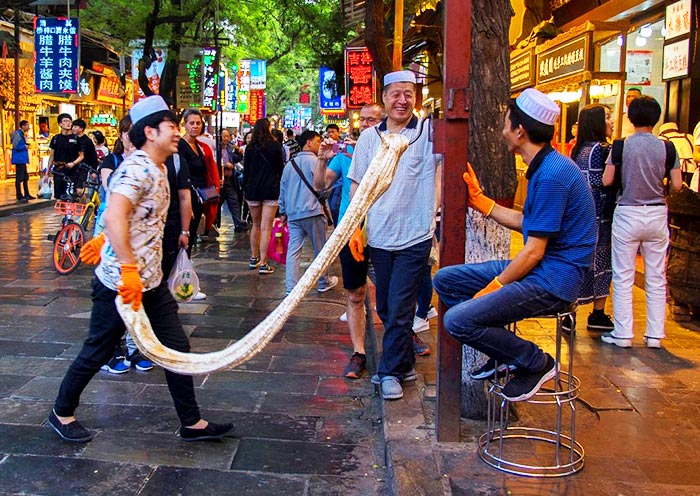
After breakfast, your tour guide and driver will meet you at your hotel in downtown Beijing. Then, you will spend the whole day exploring the ancient citadel Beijing through China’s famous landmarks, epic imperial grandeur and royal gardens.
You will head to Tian’anmen Square first, which is the world’s largest public square and also the symbol of China. It has witnessed many big events in China over the past decades and from here you can take good pictures of Tiananmen Gate showing on CCTV News every day.
Walk across the square and you will visit the might and splendor of the awe-inspiring Forbidden City (World Heritage), the world’s largest palace complex and one-time home to 24 emperors of China. With about 500 years’ history, Forbidden City served as the political and ritual center of China during the Ming (1368-1644) and the Qing (1644-1911) dynasties. With 9,999 rooms, the Forbidden City is not only China’s largest and best-preserved collection of ancient buildings, but also a city within the city, like the Vatican in Rome. Enter through Meridian Gate and visit along the central axis to ensure you won’t miss any highlighted palaces. You can admire its brilliant architecture and numerous ancient art treasures while listening to your guide and learning more about the emperors’ stories hidden inside the Imperial Palace. Later, take another 15-minute walk up to Jingshan Park, where you can have a magnificent panorama of modern Beijing and princely views over the russet roofs of the Forbidden City.
In this afternoon, drive to the “Museum of Royal Garden” - Summer Palace (World Heritage), which used to be the resort for royal families to flee summer heat. The grounds, temples, gardens, pavilions, lakes, bridges, gate-towers, and corridors are a marvel of landscaping. Enjoy the leisure walk and take your time to appreciate the imperial architectures, hilltop views, and beautiful lakes, which offer a pastoral escape into the landscapes of traditional Chinese painting. Don’t forget to try Beijing duck for dinner tonight.
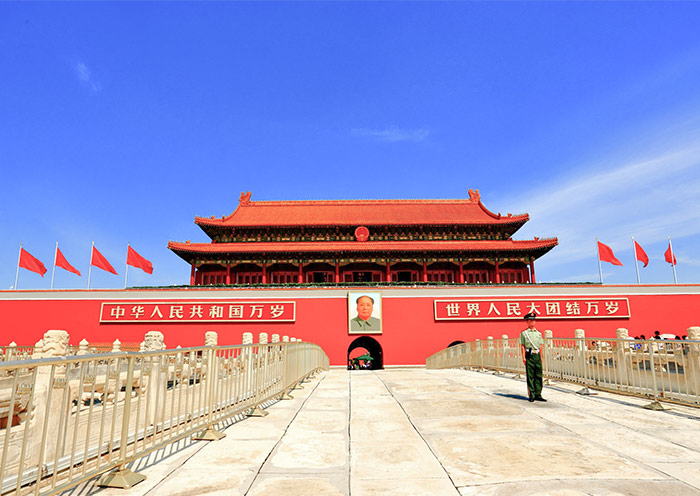
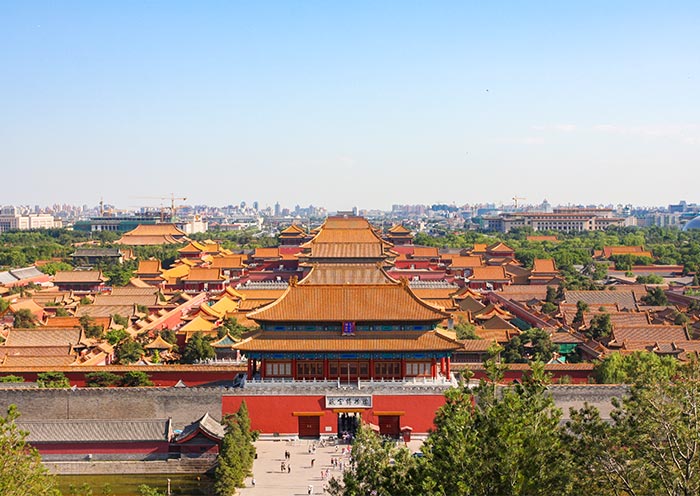
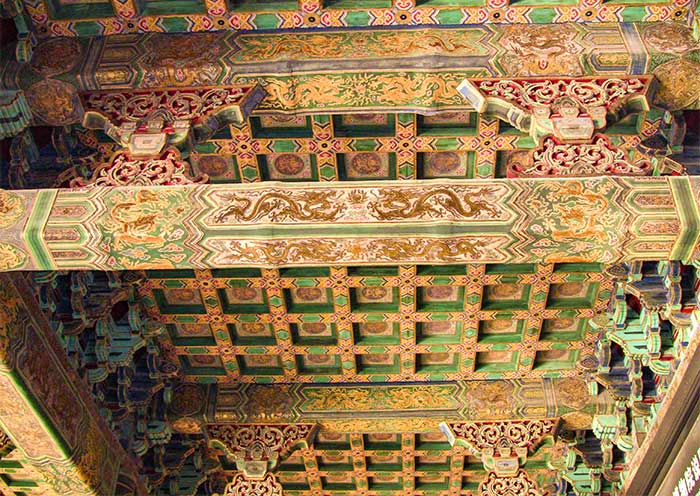
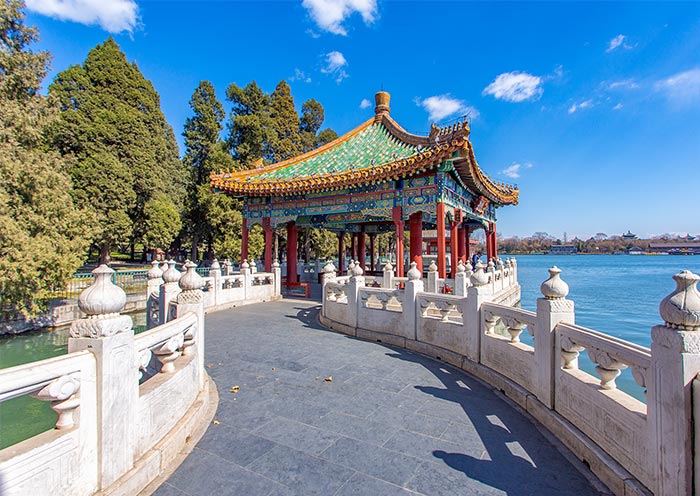
In this morning, you will head northwest of Beijing (about 1.5-2 hours’ drive, 73km) to the Great Wall at Mutianyu. The Great Wall boasts a history over 2,000 years and stretches more than 3,000 miles across several provinces of northern China, making it one of the most impressive ancient masterpieces on the planet. Mutianyu Great Wall is connected with the Jiankou Great Wall in the west and the Gubeikou Great Wall in the east. Mutianyu is the longest and best fully-restored Great Wall with fewer tourists and is also famed for its 23 Ming-era watchtowers and stunning views. Take the cable car up to the 14th watchtower and then enjoy the memorable hiking time on the wall while visiting its western route. With the green pines and cypresses covering the surrounding area, and the winding wall standing majestically on the vast land, you will capture the most stunning natural scenery in this section. Challenge yourselves while climbing up to the 20th watchtower where you could fulfill your Great Wall dream. Cherish the chance and take photos as many as you like!
After the once-in-lifetime experience, head back to downtown Beijing for the Olympic Park and have the chance to take photos with the exterior of the Bird's Nest (Beijing National Stadium) and Water Cube (Beijing National Aquatics Center). They were both designed for the 2008 Beijing Olympics and used for the 2022 Winter Olympic Games. After that, transfer back to your hotel and have a good rest tonight.
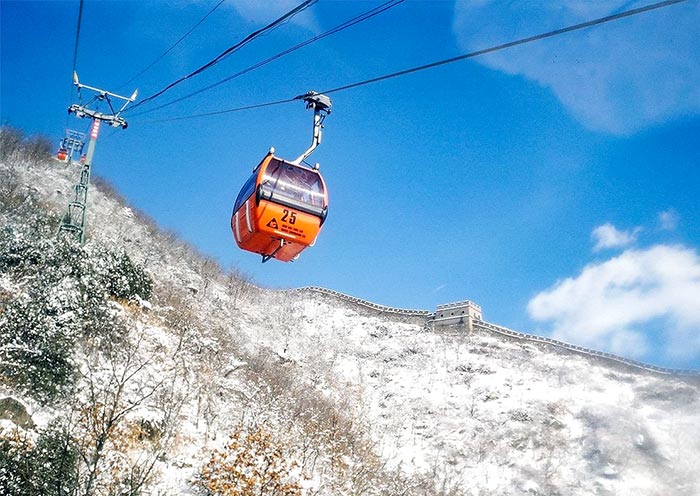
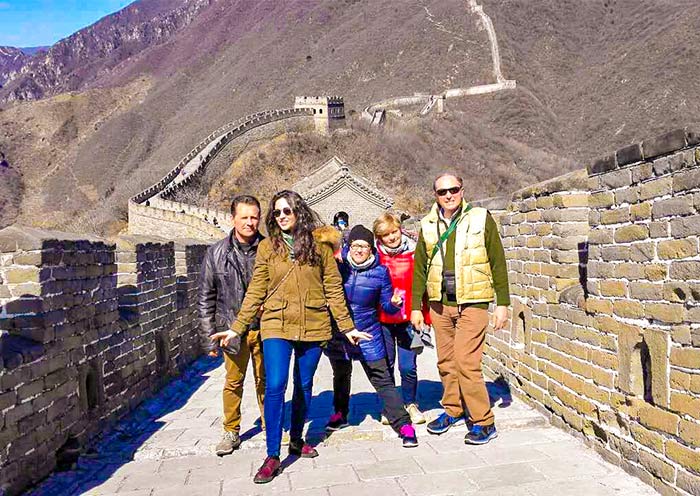
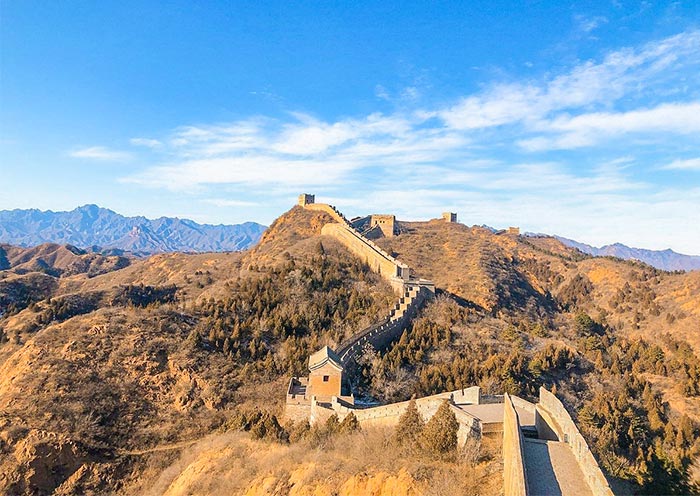
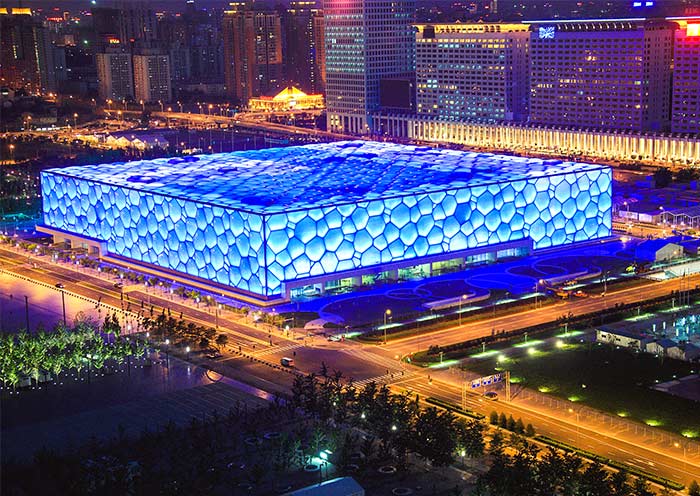
This morning you will head to Temple of Heaven (World Heritage). Located in Beijing's Tiantan Park, the Temple of Heaven is much bigger than the Forbidden City and smaller than the Summer Palace. As a Taoist temple, the Temple of Heaven is also known for its rigorous symbolic layout, peculiar structure, and magnificent decoration. The Temple of Heaven used to be a place to offer sacrifice to Heaven by 22 Chinese emperors twice a year for good harvests. You can learn more about the grand praying ceremony there, as well as observe the amazing designs such as the Echo Wall and the Triple Sound Stones. Nowadays, it is also a park for local people to do morning exercise and you are welcome to join them.
Then head to Beijing Confucius Temple and Imperial College Museum. The museum is consisting of two parts: Confucius Temple (Kongmiao) and Imperial College Museum (Guozijian). Kongmiao is the place where people paid homage to Confucius during the Yuan Dynasty (1271-1368), Ming Dynasty (1368-1644), and Qing Dynasty (1644-1911). Confucius is the greatest thinker and educationalist in ancient China. Guozijian (Imperial academy) is a kind of university/college in ancient China that can be traced back to the Sui Dynasty (581–618). Guozijian is also the place where the Emperor personally lectures. The college was constructed right next to the temple in accordance with Chinese tradition where a temple is always to the left of a school. This museum is a good place for you to learn more about ancient China's education system and ancient buildings.
At last, you can also enjoy a relaxing time exploring the ordinary local life through the Wudaoying Hutong which is near the museum. It is the coolest non-touristy hutong alleyway street in all of Beijing. Travel through the narrow alleys with many featured shops standing on both sides. After that, transfer back to your hotel and have a good rest tonight.
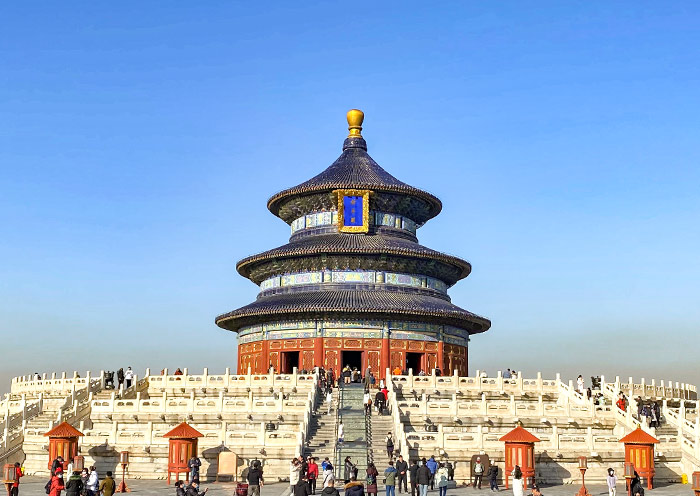
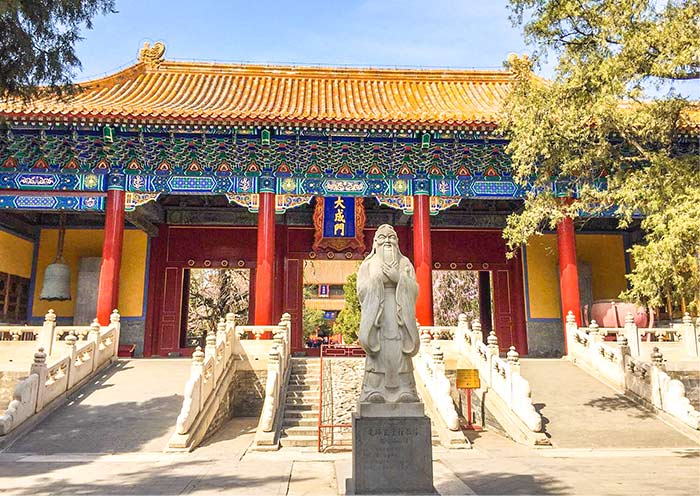
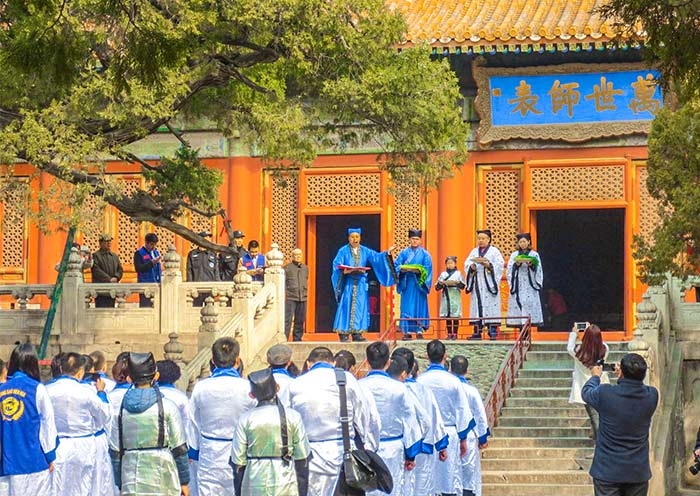
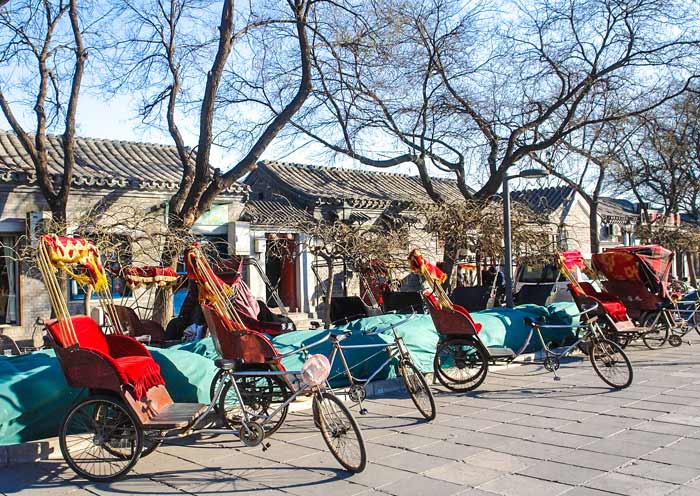
It is time to end your 21-day China Tour from Beijing. You will have some free time in Beijing and explore more on your own till your guide escorts you to the airport for your flight to your next destination.
Thank you for choosing Asia Odyssey Travel for your China tour, and we are always here working for you and hope to see you again for your next trip to China/Asia.
Price: What’s Included & What’s Excluded
What's Included:
What's Excluded:
Hotel Conditions for Your Asia Tour
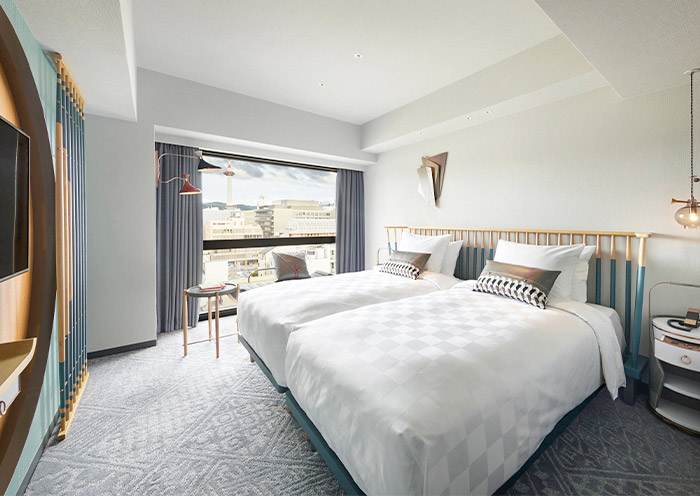

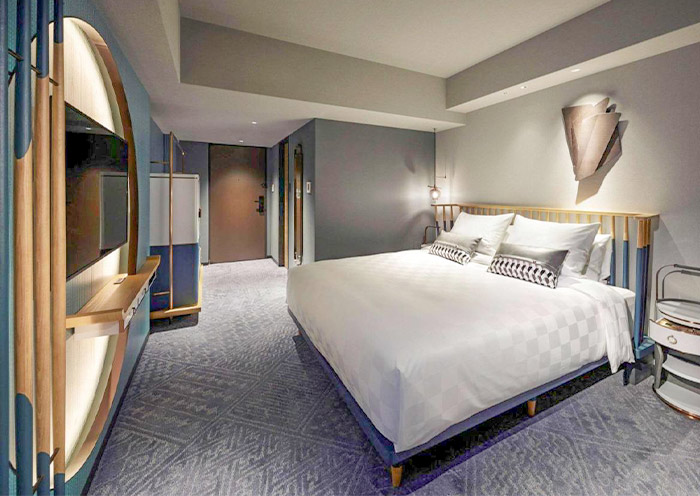
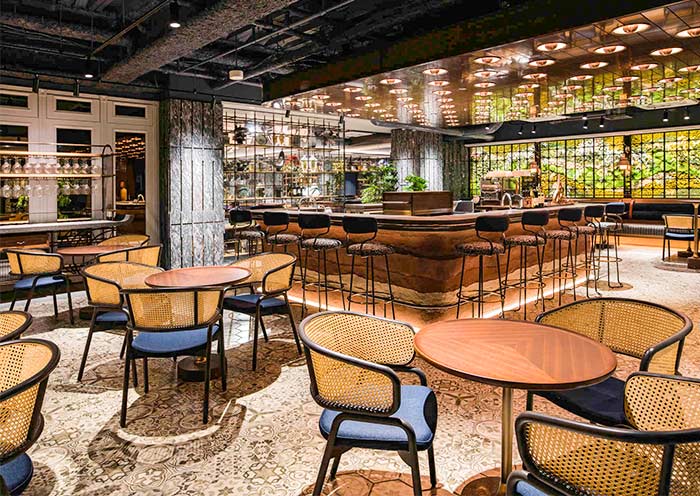
We offer a range of accommodation options to suit various preferences and budgets: luxurious 5-star hotels, comfortable 4-star hotels, and economical 3-star hotels. Our selected hotels are conveniently located close to the city center or popular tourist spots.
If you have specific needs or preferences, please consult with your travel advisor.
Photo Gallery for This Itinerary
Price: request
(Based on a private tour for two people. Price varies depending on program, travel date, number of people.)
Free Enquiry! You don’t need to pay for the reservation.
- United States (+1)
- Australia (+61)
- Singapore (+65)
- Malaysia (+60)
- Philippines (+63)
- Canada (+1)
- Italy (+39)
- Indonesia (+62)
- United Kingdom (+44)
- Spain (+34)
- Mexico (+52)
- Hong Kong (+852)
- Thailand (+66)
- United Arab Emirates (+971)
- New Zealand (+64)
- South Africa (+27)
- Germany (+49)
- Brazil (+55)
- India (+91)
- France (+33)
- Vietnam (+84)
- The Netherlands (+31)
- Saudi Arabia (+966)
- Ireland (+353)
- Argentina (+54)
- Switzerland (+41)
- Romania (+40)
- Pakistan (+92)
- Japan (+81)
- Portugal (+351)
- Bangladesh (+880)
- South Korea (+82)
- Puerto Rico (+1)
- Türkiye (+90)
- China (+86)
- Belgium (+32)
- Qatar (+974)
- Greece (+30)
- Taiwan (+886)
- Austria (+43)
- Poland (+48)
- Israel (+972)
- Chile (+56)
- Sri Lanka (+94)
- Nigeria (+234)
- Peru (+51)
- Colombia (+57)
- Hungary (+36)
- Nepal (+977)
- Denmark (+45)
- Bulgaria (+359)
- Norway (+47)
- Slovenia (+383)
- Sweden (+46)
- Kuwait (+965)
- Costa Rica (+506)
- Ecuador (+593)
- Venezuela (+58)
- Malta (+356)
- Croatia (+385)
- Tunisia (+216)
- Czechia (+420)
- Mongolia (+976)
- Bahrain (+973)
- Mauritius (+230)
- Papua New Guinea (+675)
- Cambodia (+855)
- Dominican Republic (+1)
- Luxembourg (+352)
- Finland (+358)
- Guatemala (+502)
- Myanmar (+95)
- Maldives (+960)
- Slovakia (+421)
- Laos (+856)
- Serbia (+381)
- Brunei (+673)
- Oman (+968)
- Macao (+853)
- Panama (+507)
- Morocco (+212)
- Jordan (+962)
- Georgia (+995)
- Fiji (+679)
- Bolivia (+591)
- Lithuania (+370)
- Bahamas (+1)
- Cyprus (+357)
- Latvia (+371)
- Bhutan (+975)
- Iraq (+964)
- Iran (+98)
- Kenya (+254)
- Jamaica (+1)
- Zimbabwe (+263)
- Azerbaijan (+994)
- Uruguay (+598)
- Estonia (+372)
- Andorra (+376)
- Cameroon (+237)
- Ghana (+233)
- Kazakhstan (+7)
- Nicaragua (+505)
- Egypt (+20)
- Russia (+7)
- Albania (+355)
- Réunion (+262)
- Montenegro (+382)
- Algeria (+213)
- Afghanistan (+93)
- Martinique (+596)
- Uganda (+256)
- Honduras (+504)
- North Macedonia (+389)
- Trinidad and Tobago (+1)
- Suriname (+597)
- Antigua and Barbuda (+1)
- Zambia (+260)
- Ukraine (+380)
- Armenia (+374)
- Barbados (+1)
- Belarus (+375)
- Palestine (+970)
- Lesotho (+266)
- Moldova (+373)
- Ethiopia (+251)
- French Polynesia (+689)
- Gambia (+220)
- Guam (+1)
- Gibraltar (+350)
- Isle of Man (+44)
- New Caledonia (+687)
- El Salvador (+503)
- Comoros (+269)
- Seychelles (+248)
- Chad (+235)
- Samoa (+685)
- Cook Islands (+682)
- Palau (+680)
- Paraguay (+595)
- DR Congo (+243)
- Solomon Islands (+677)
